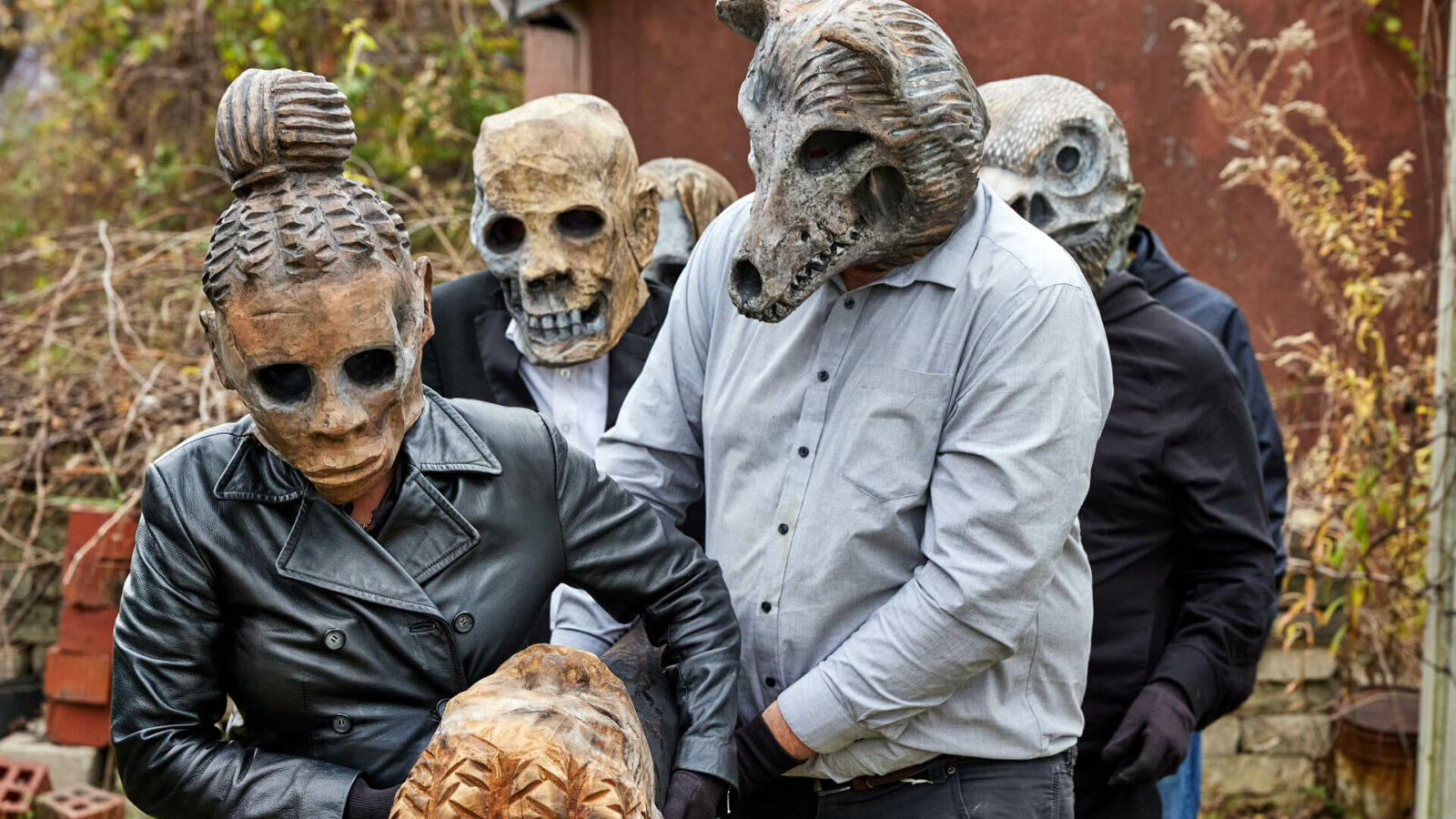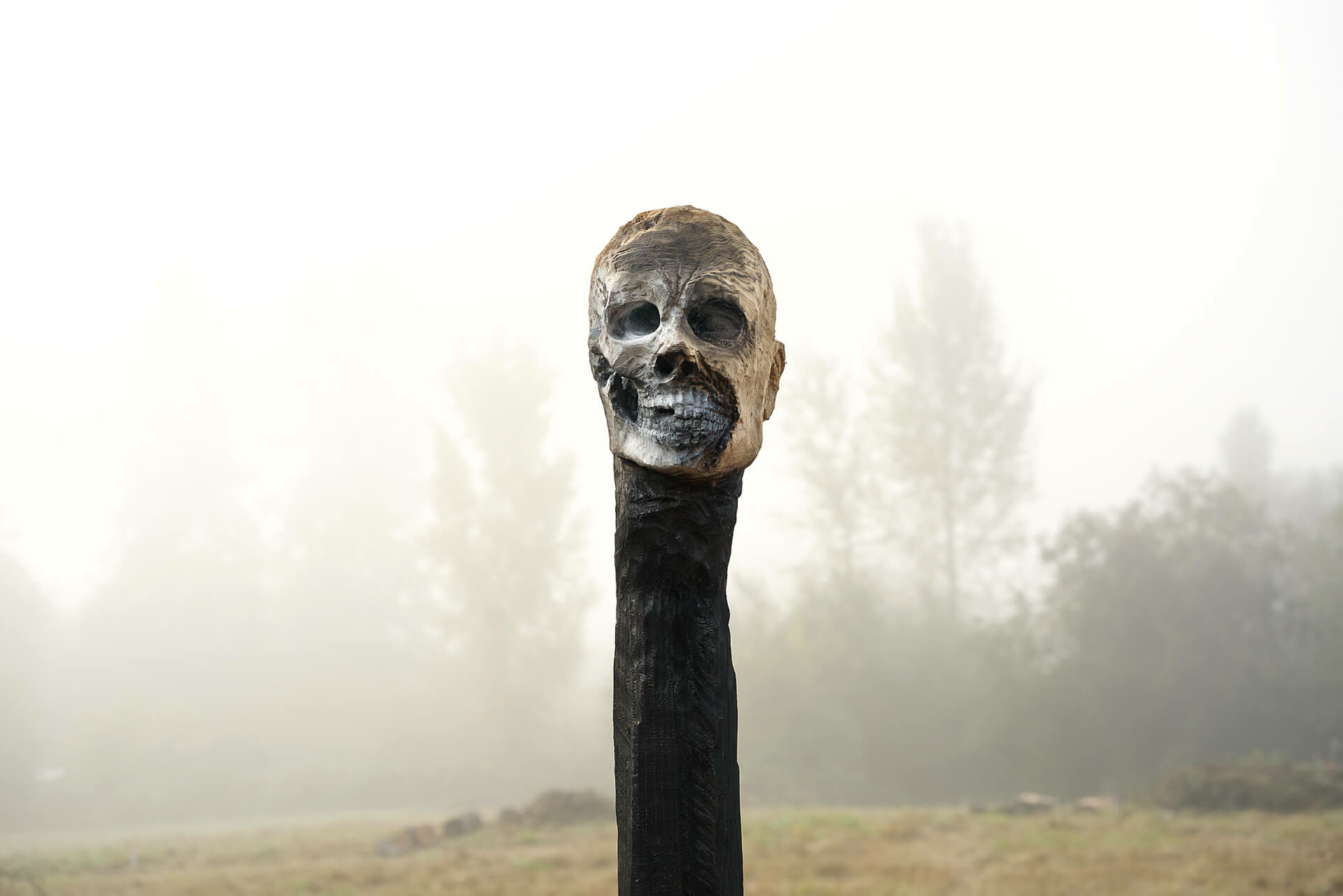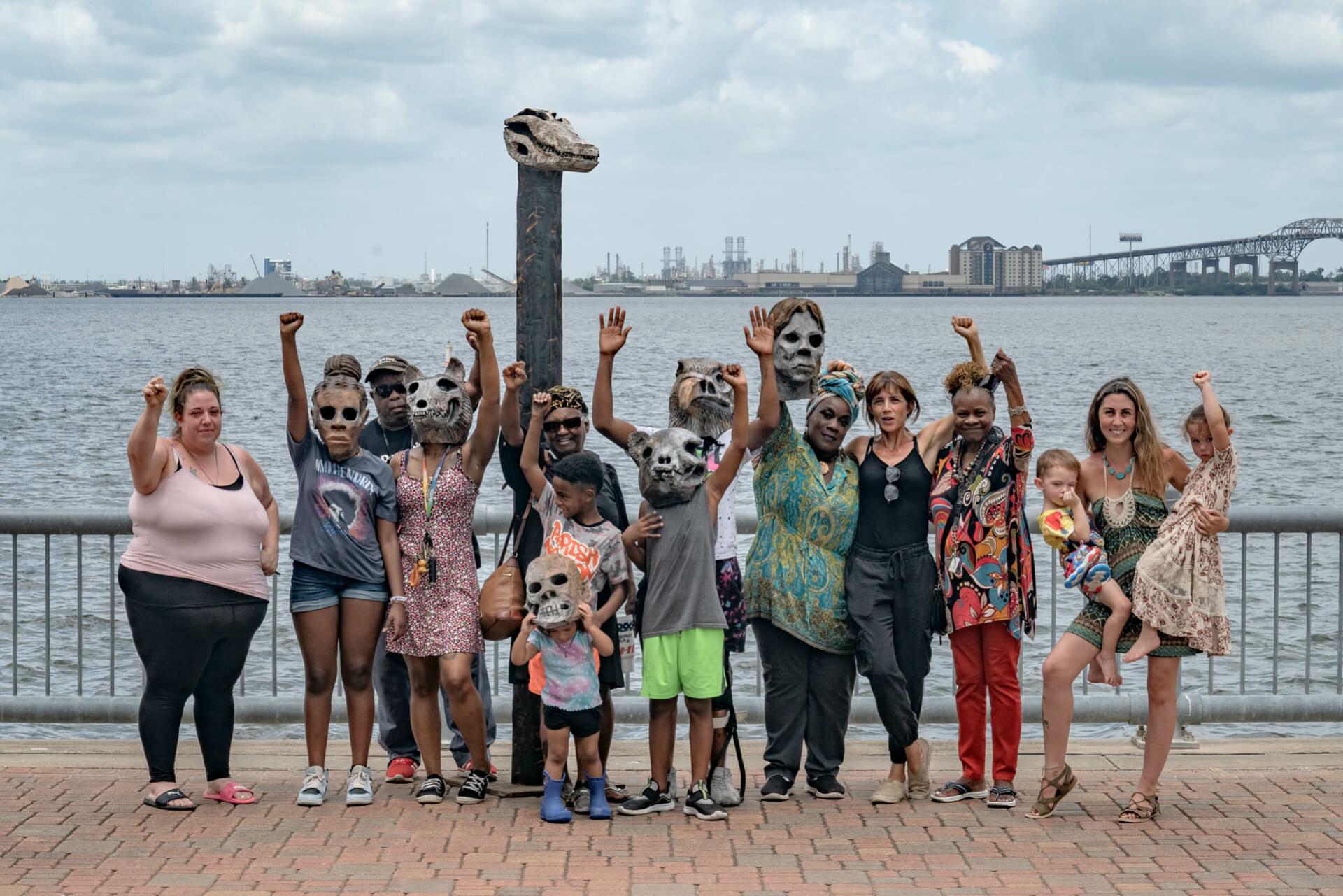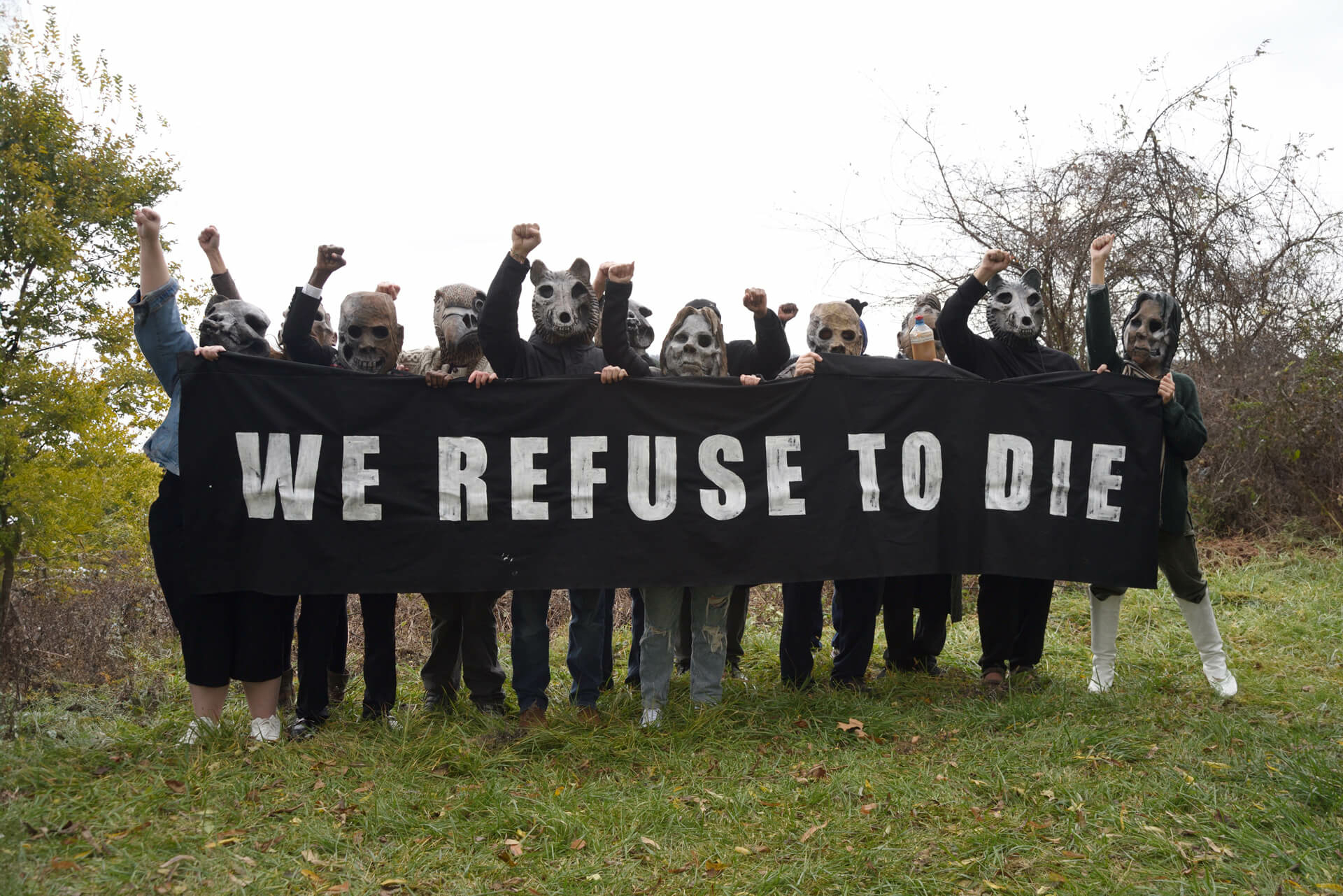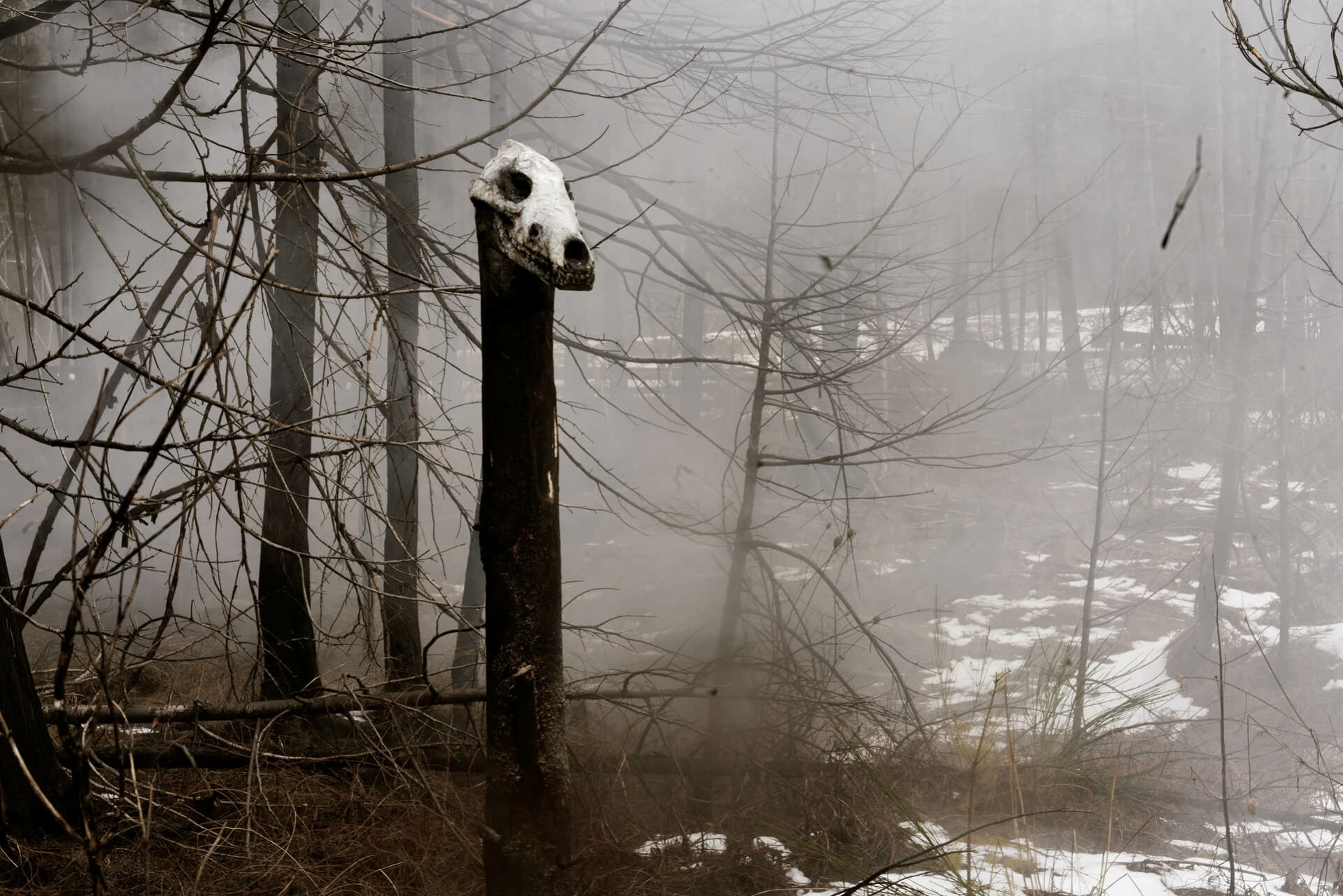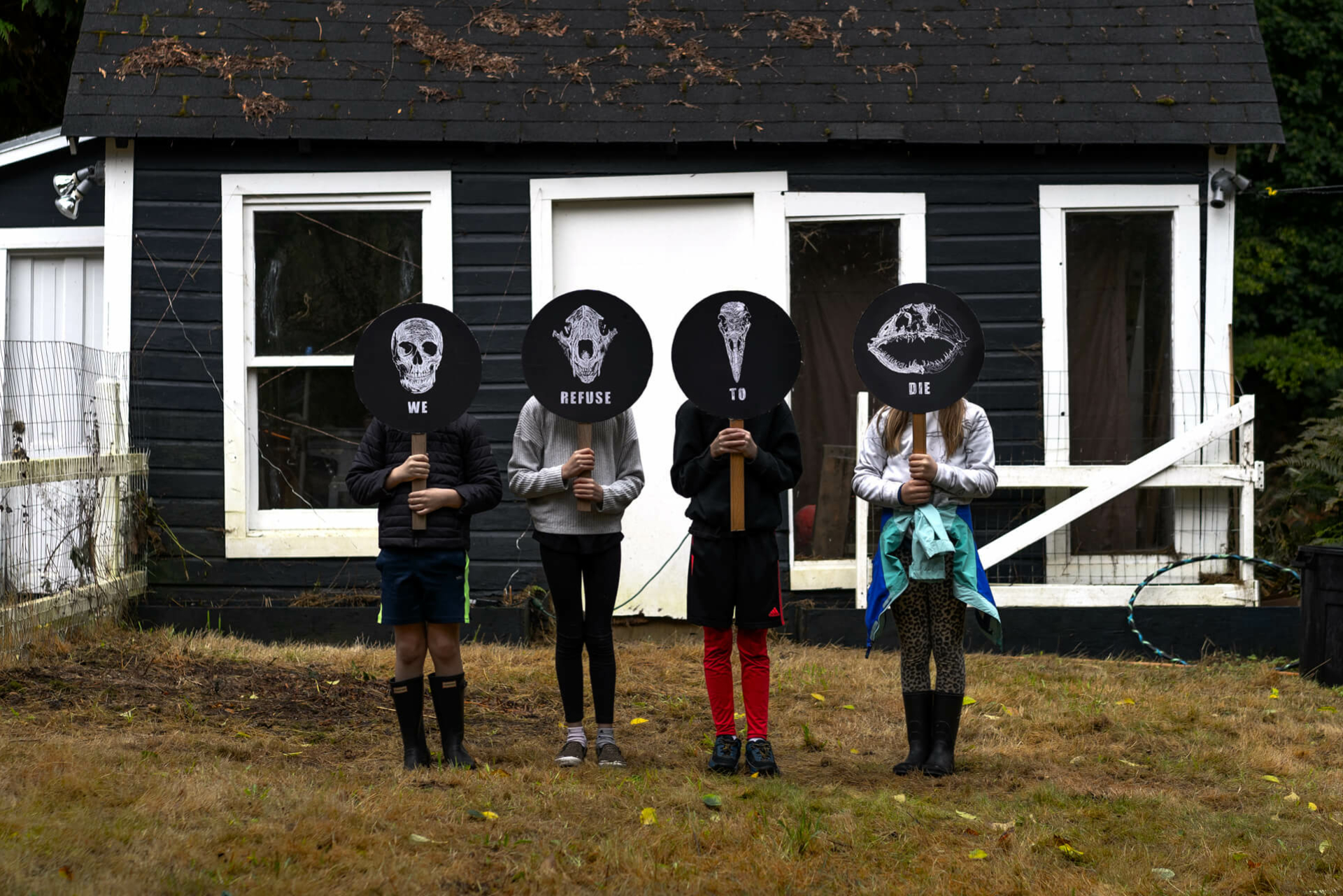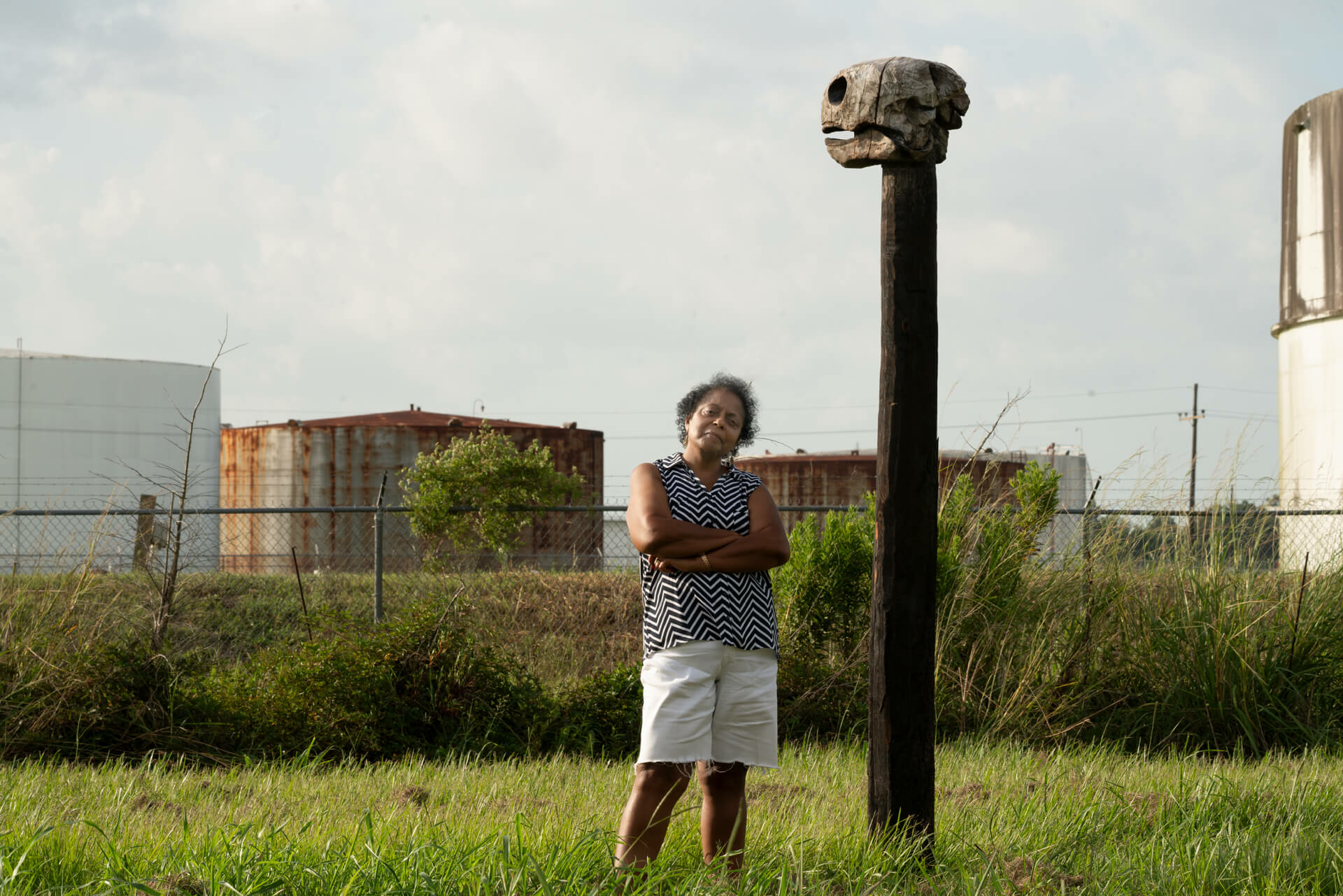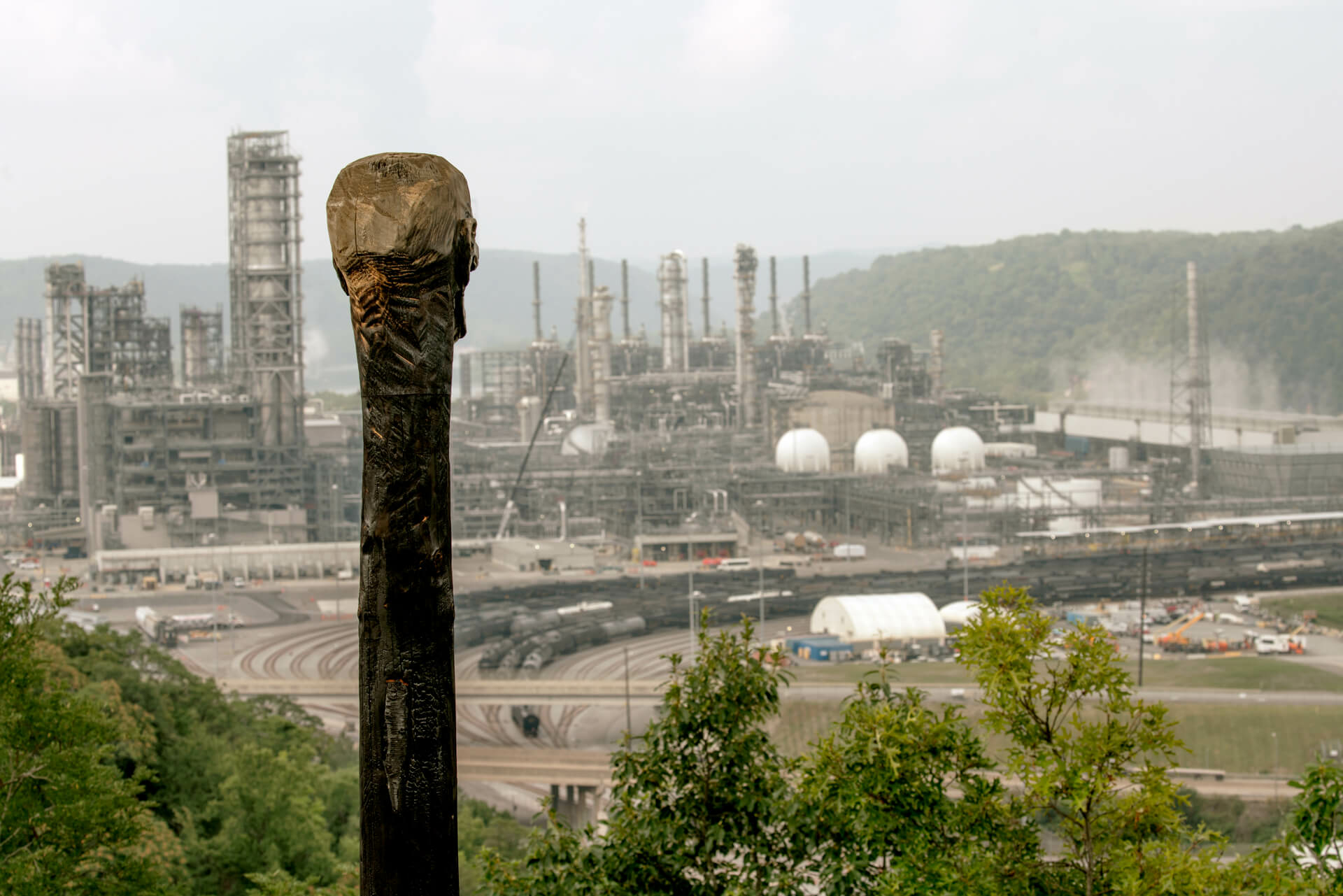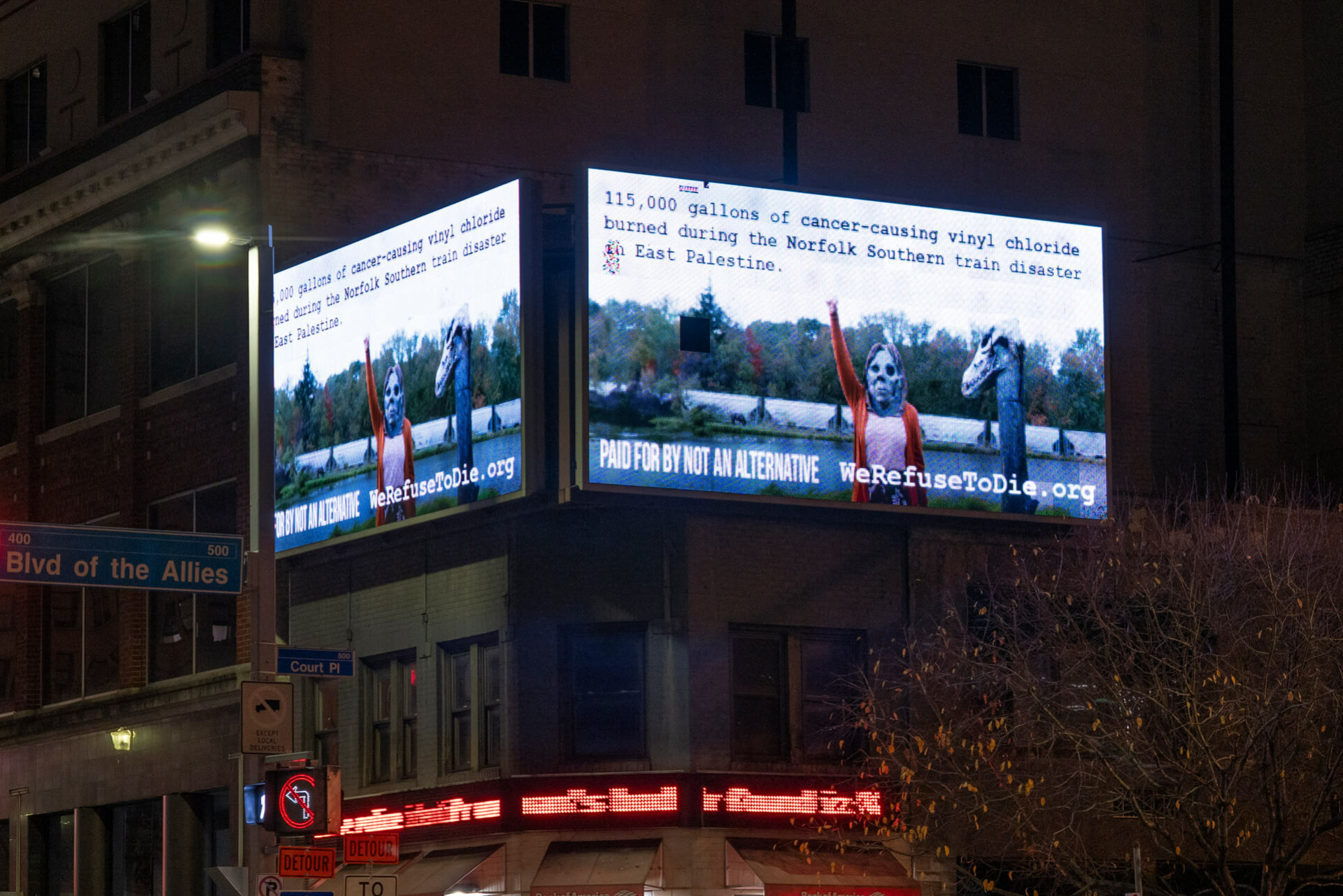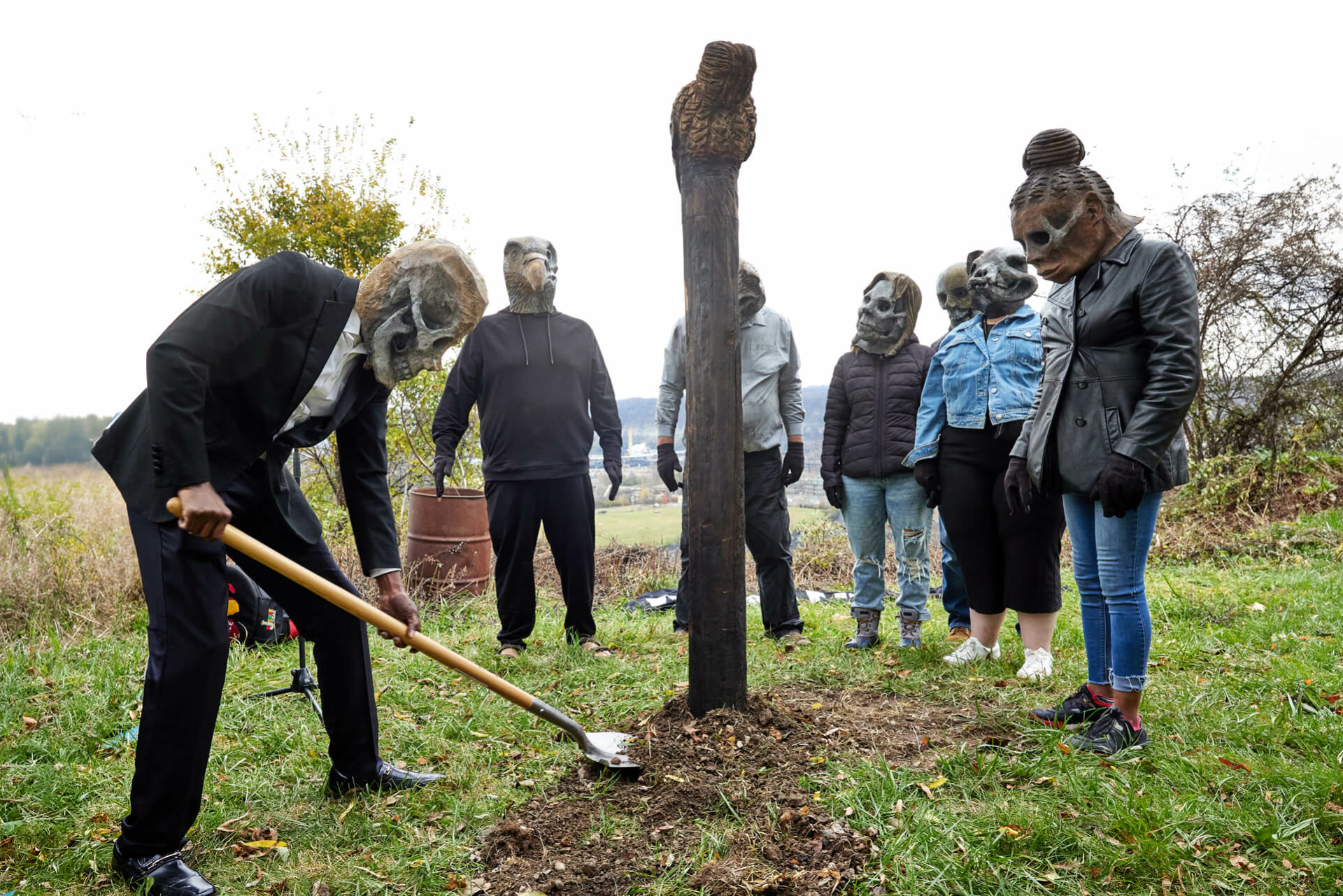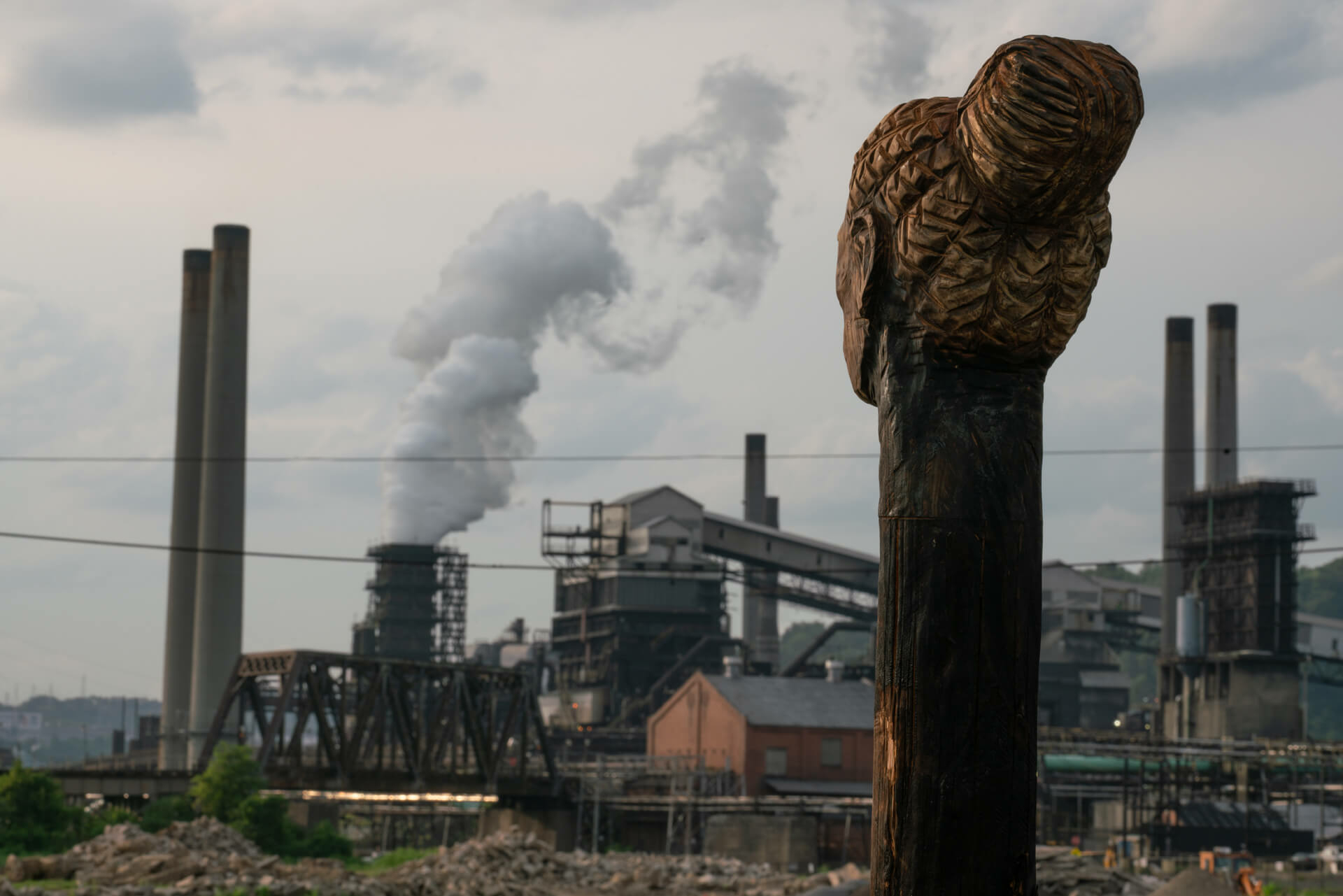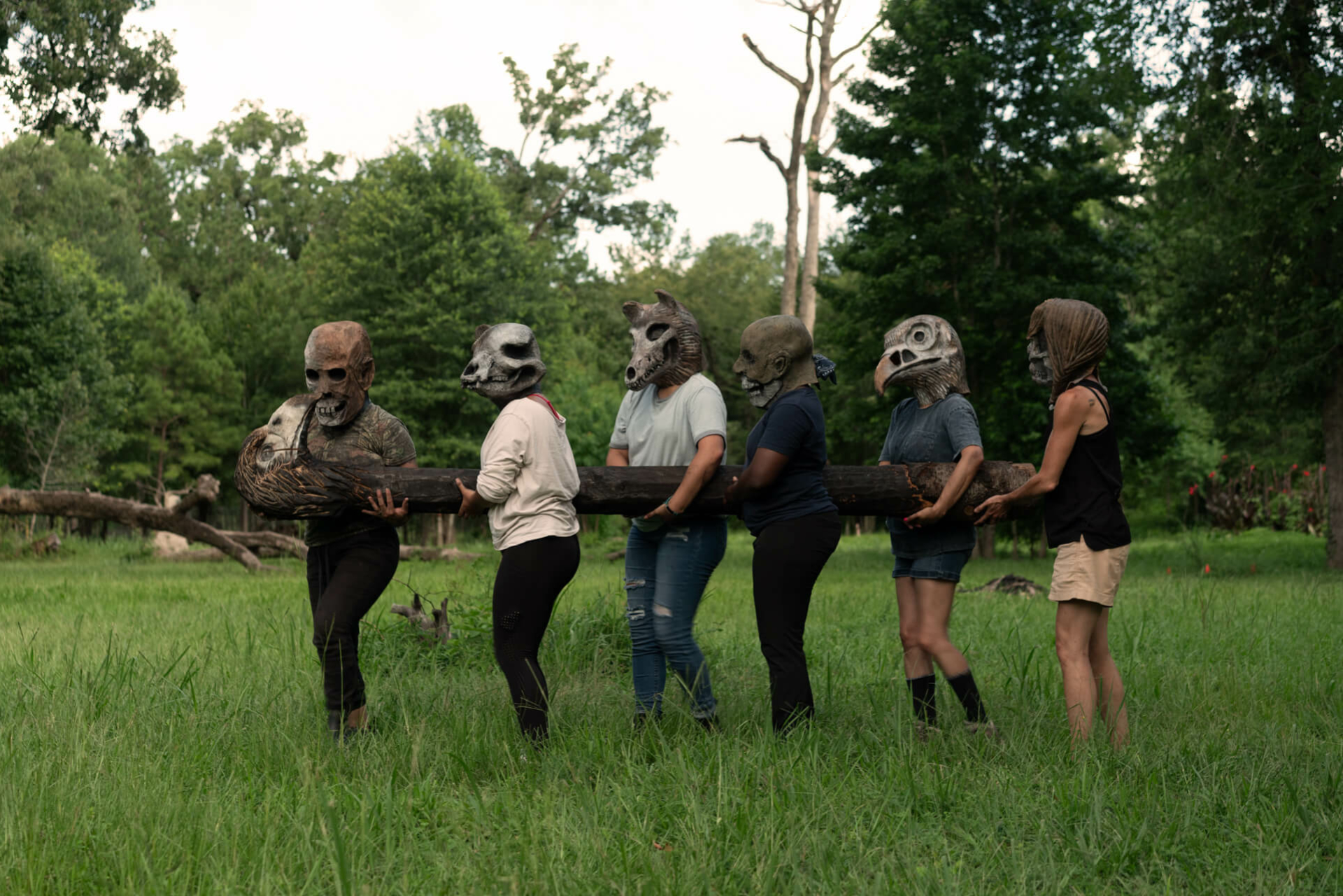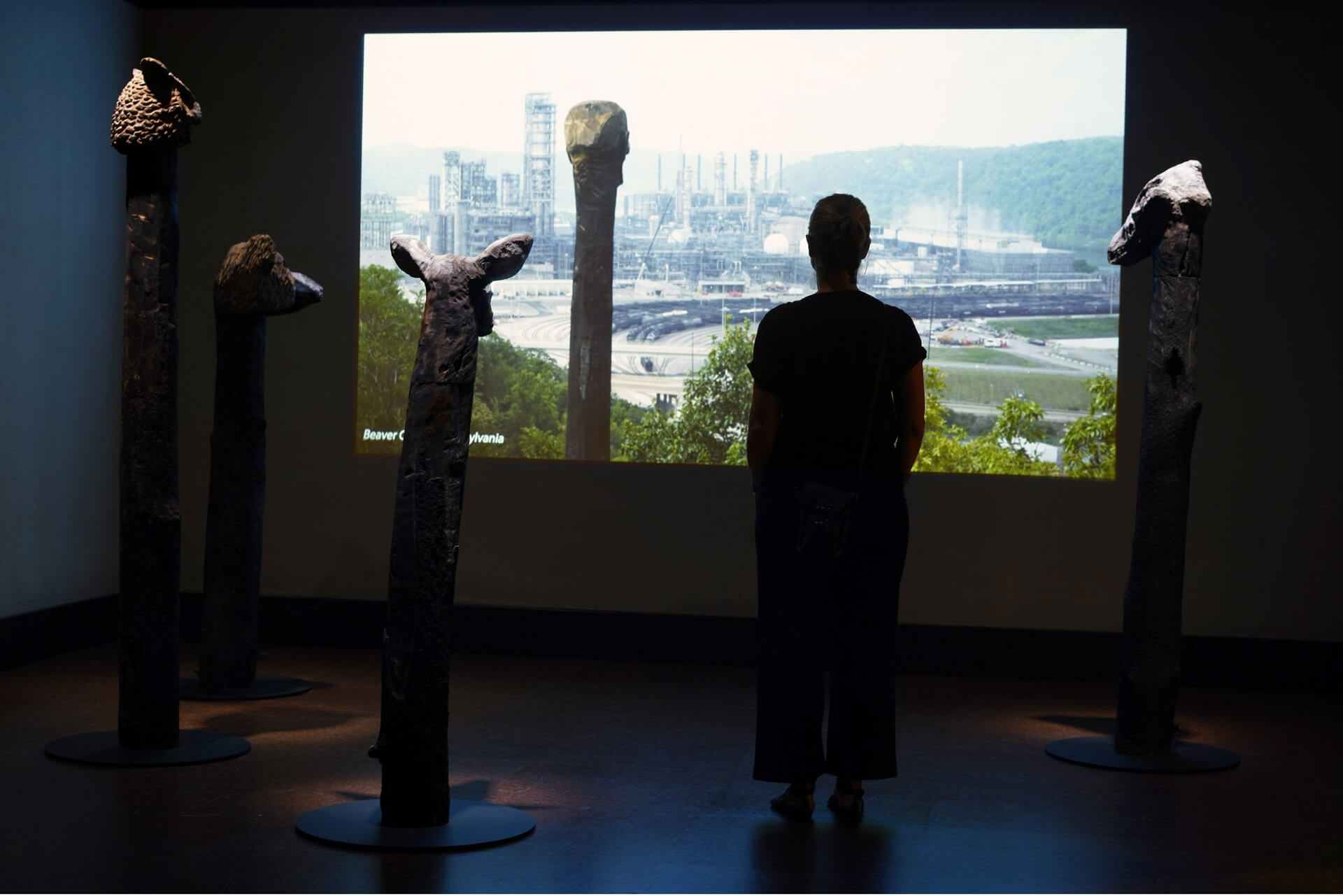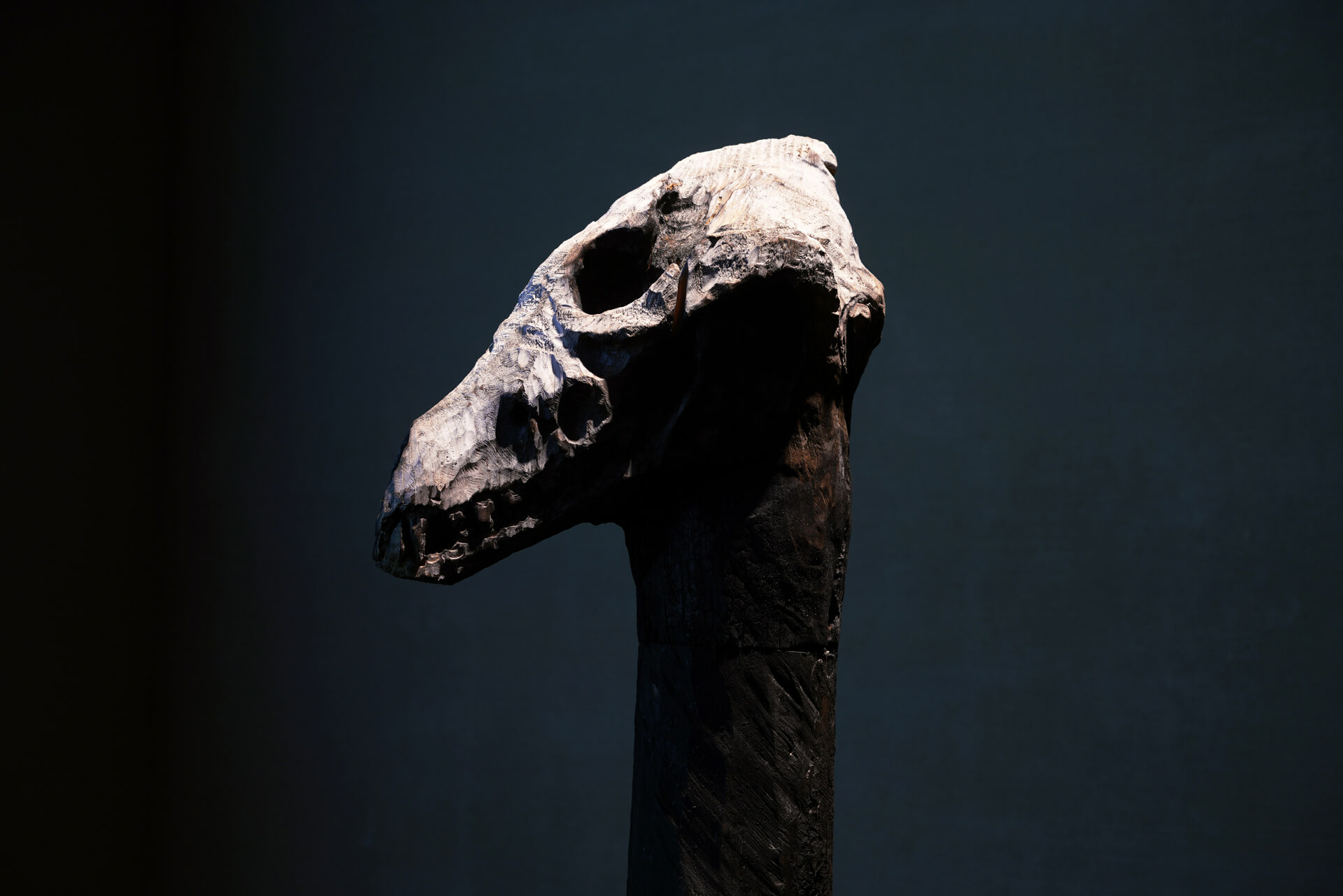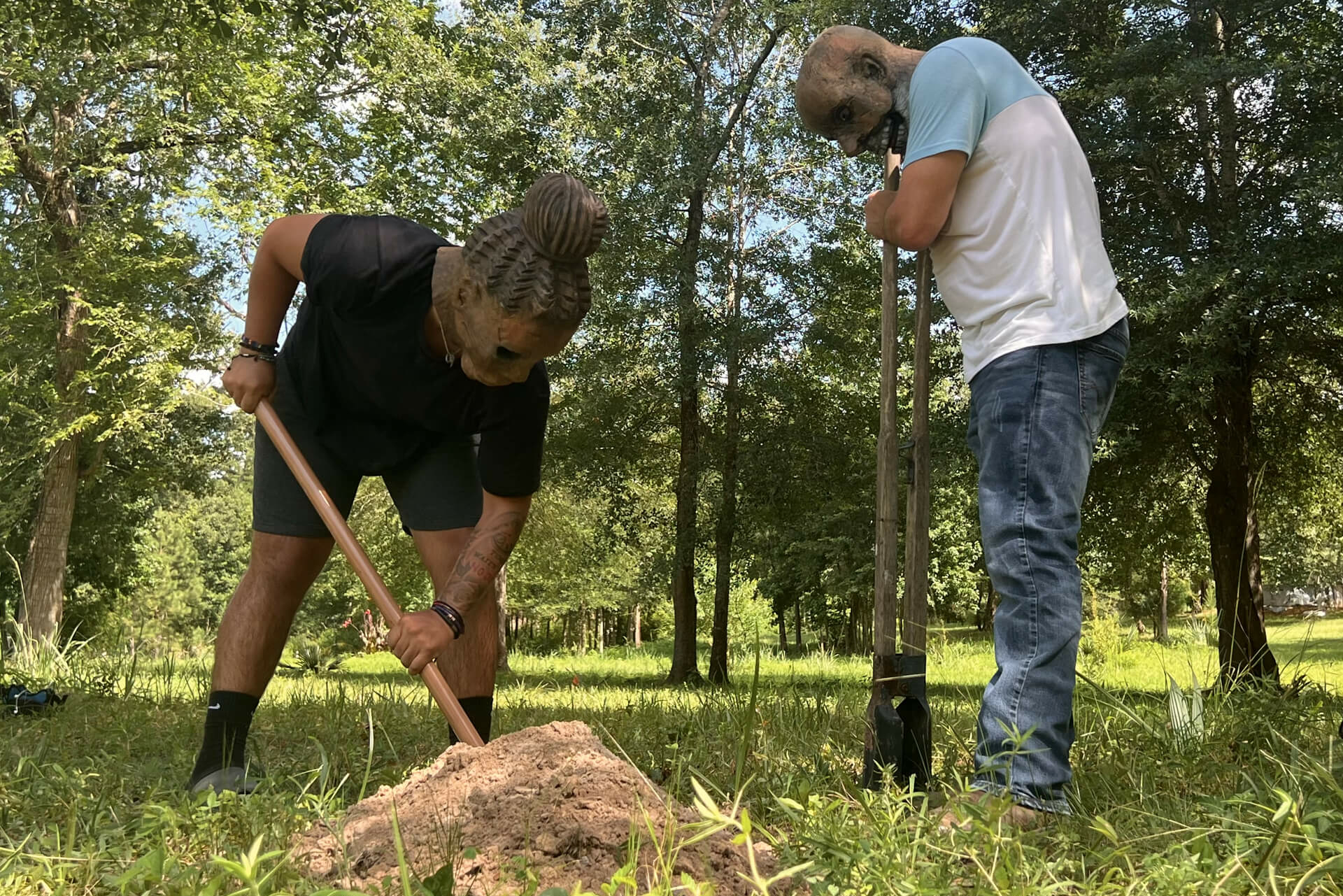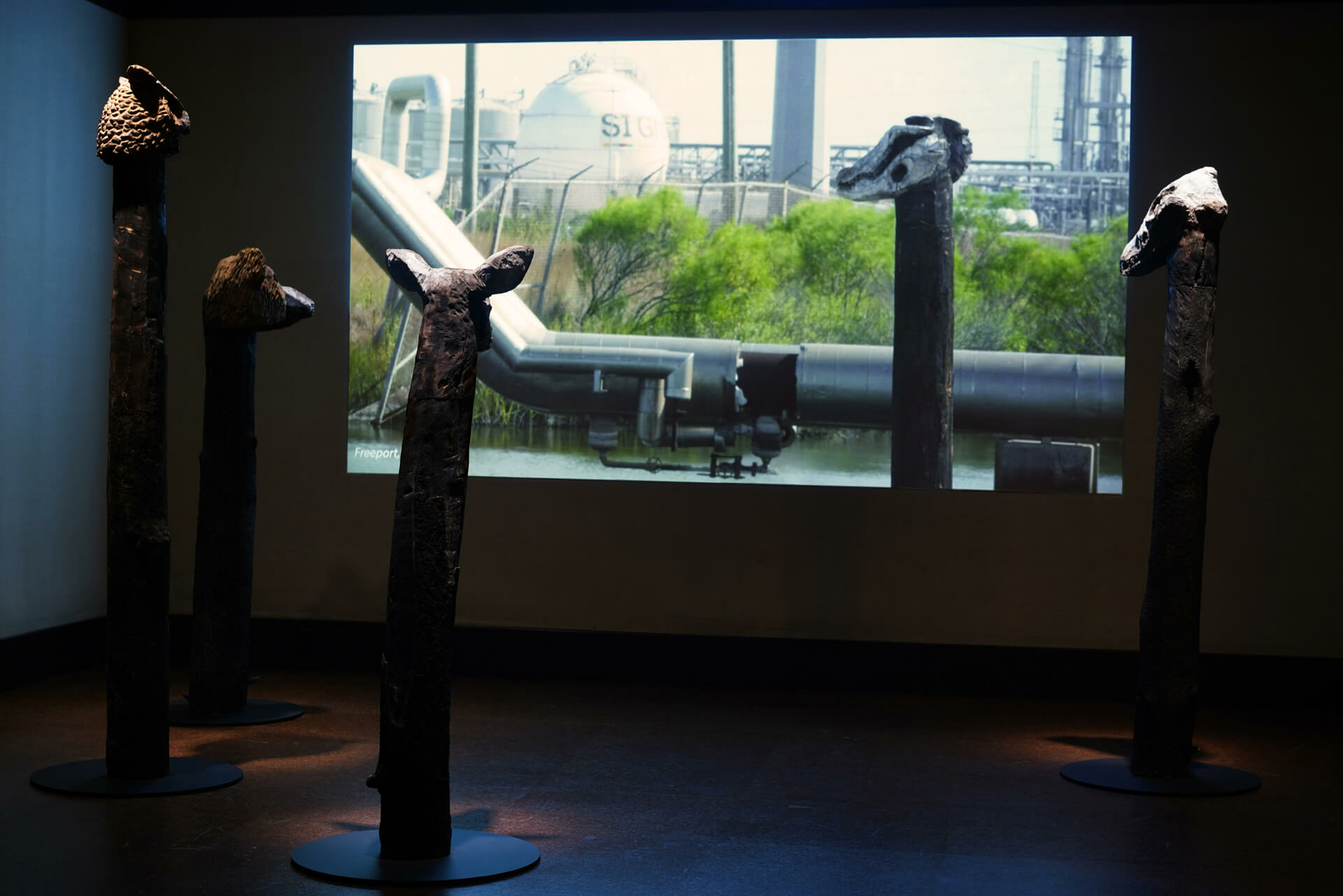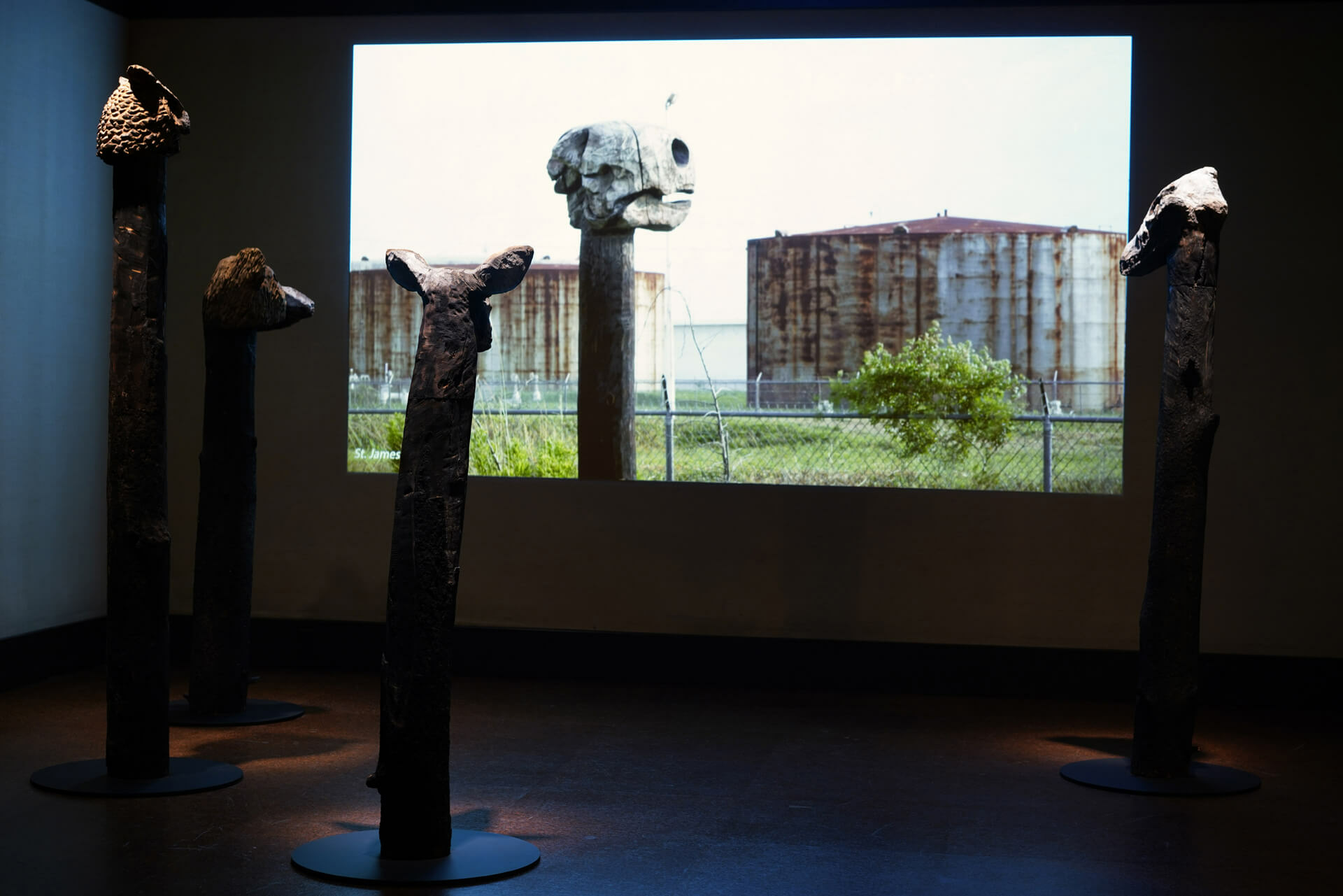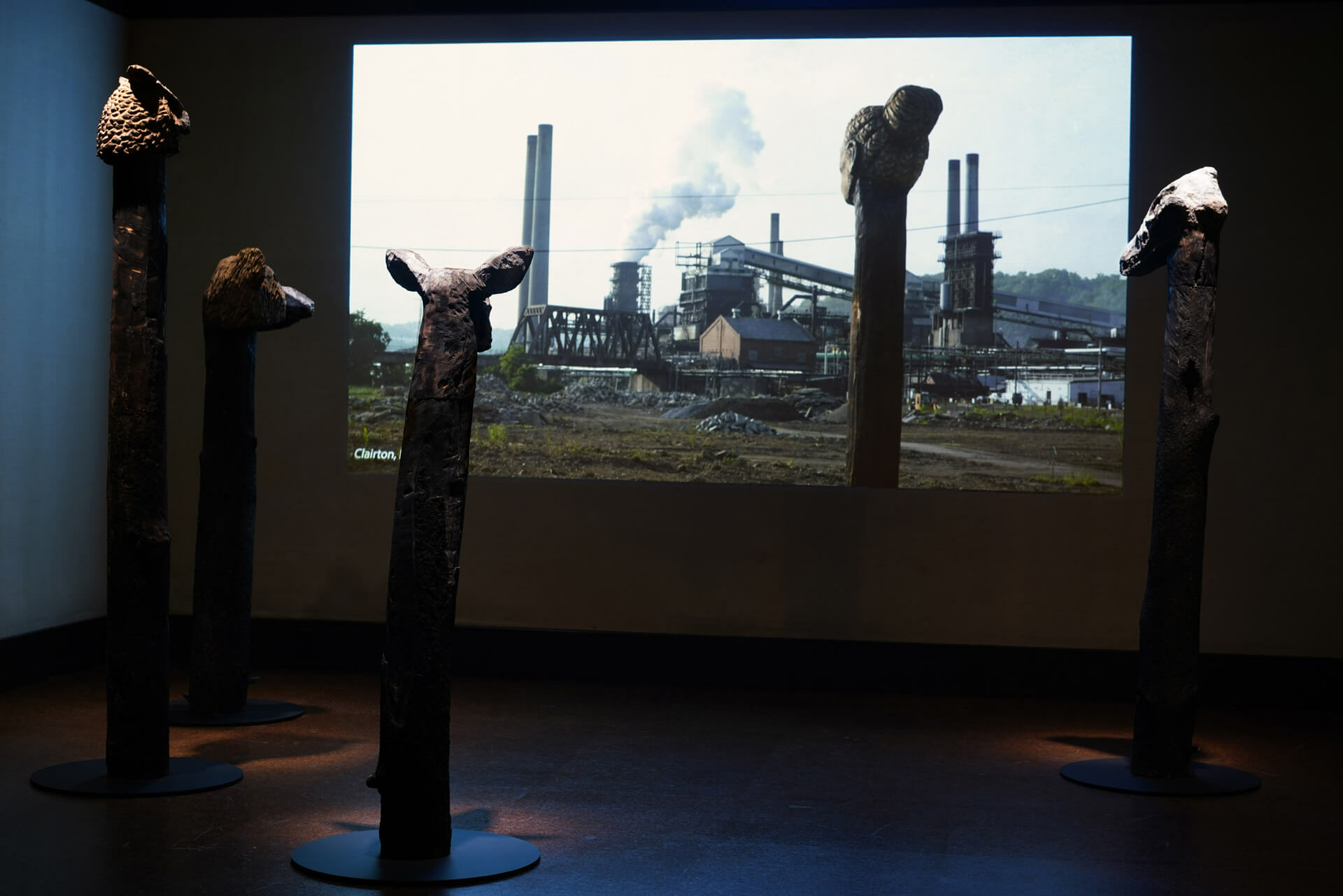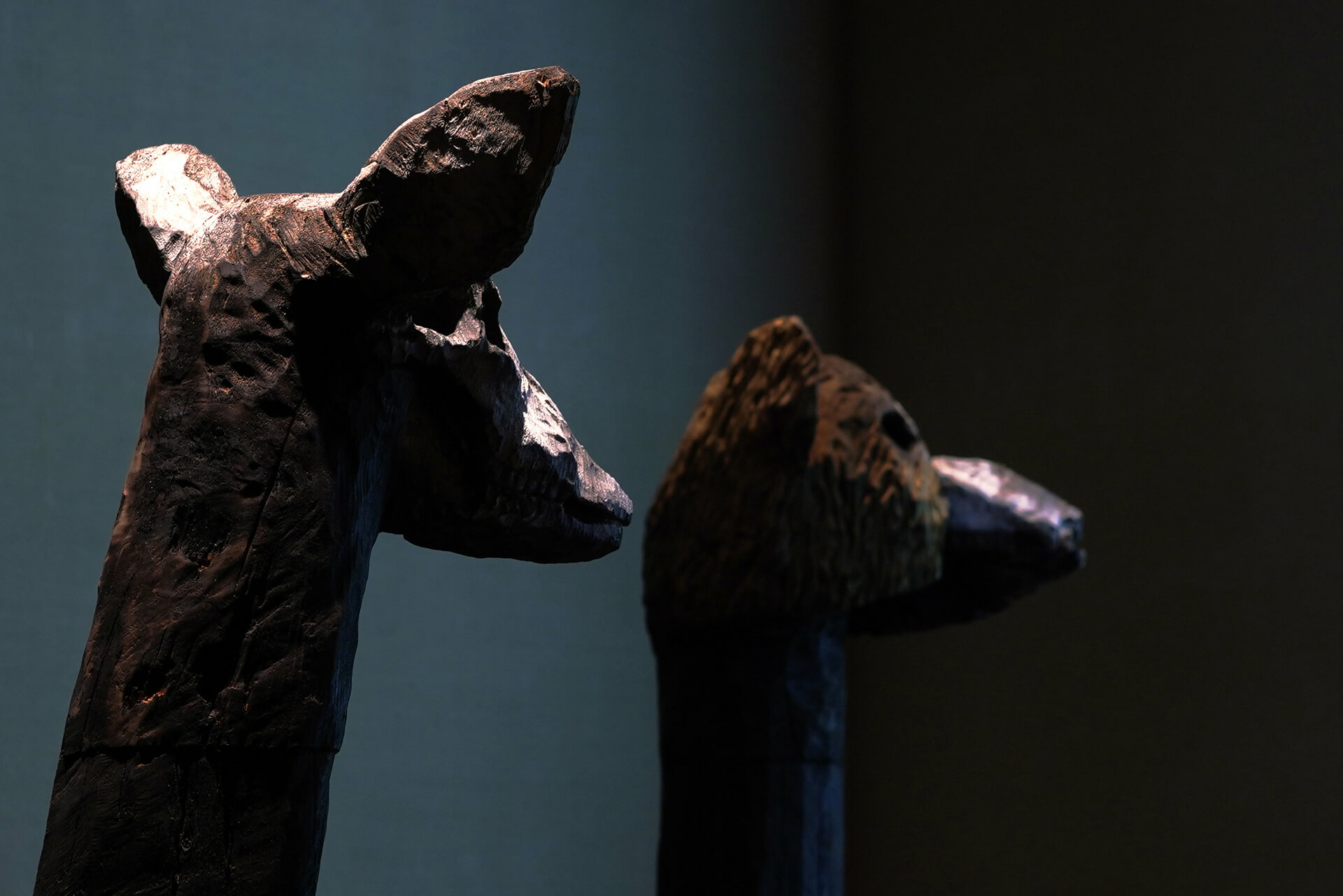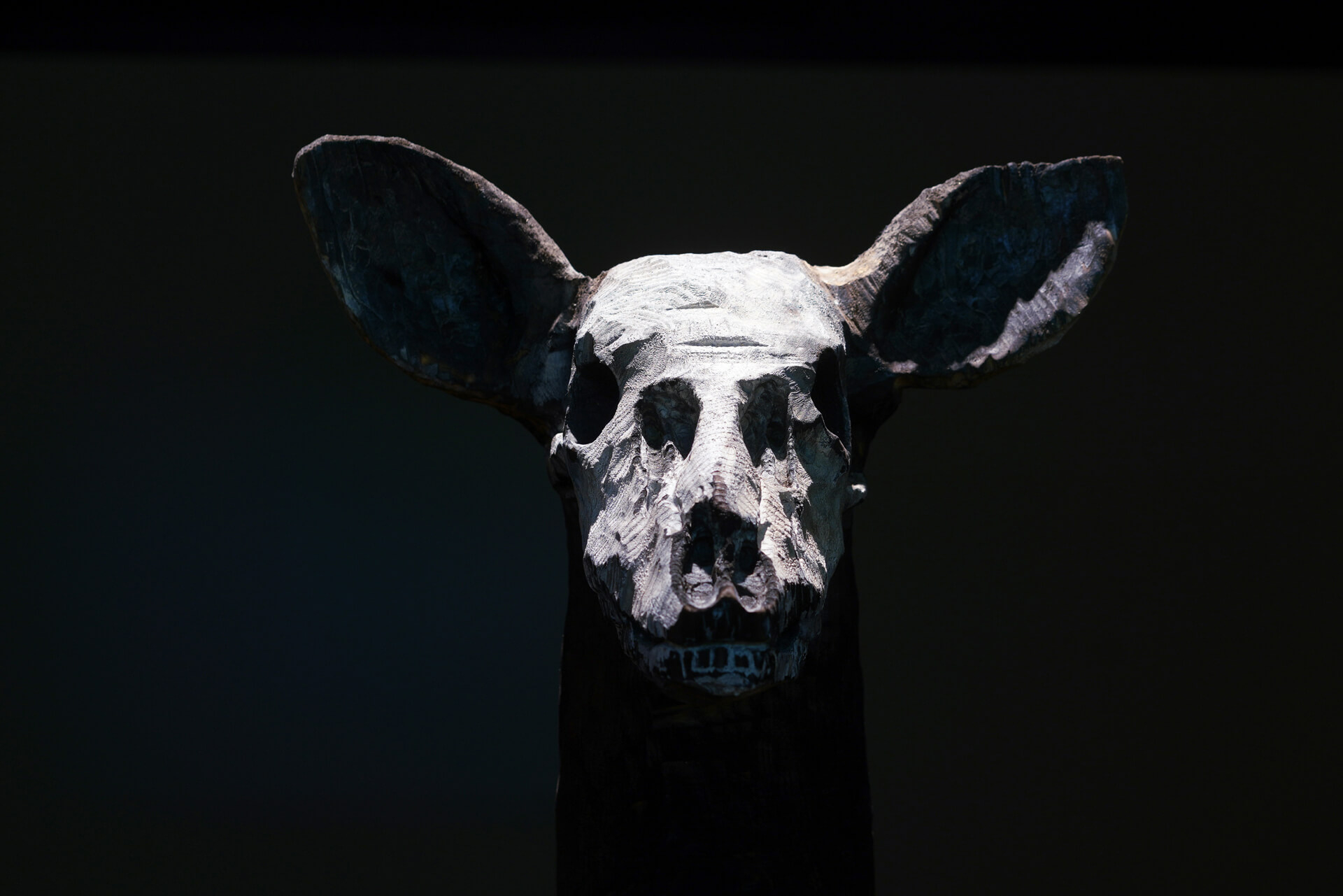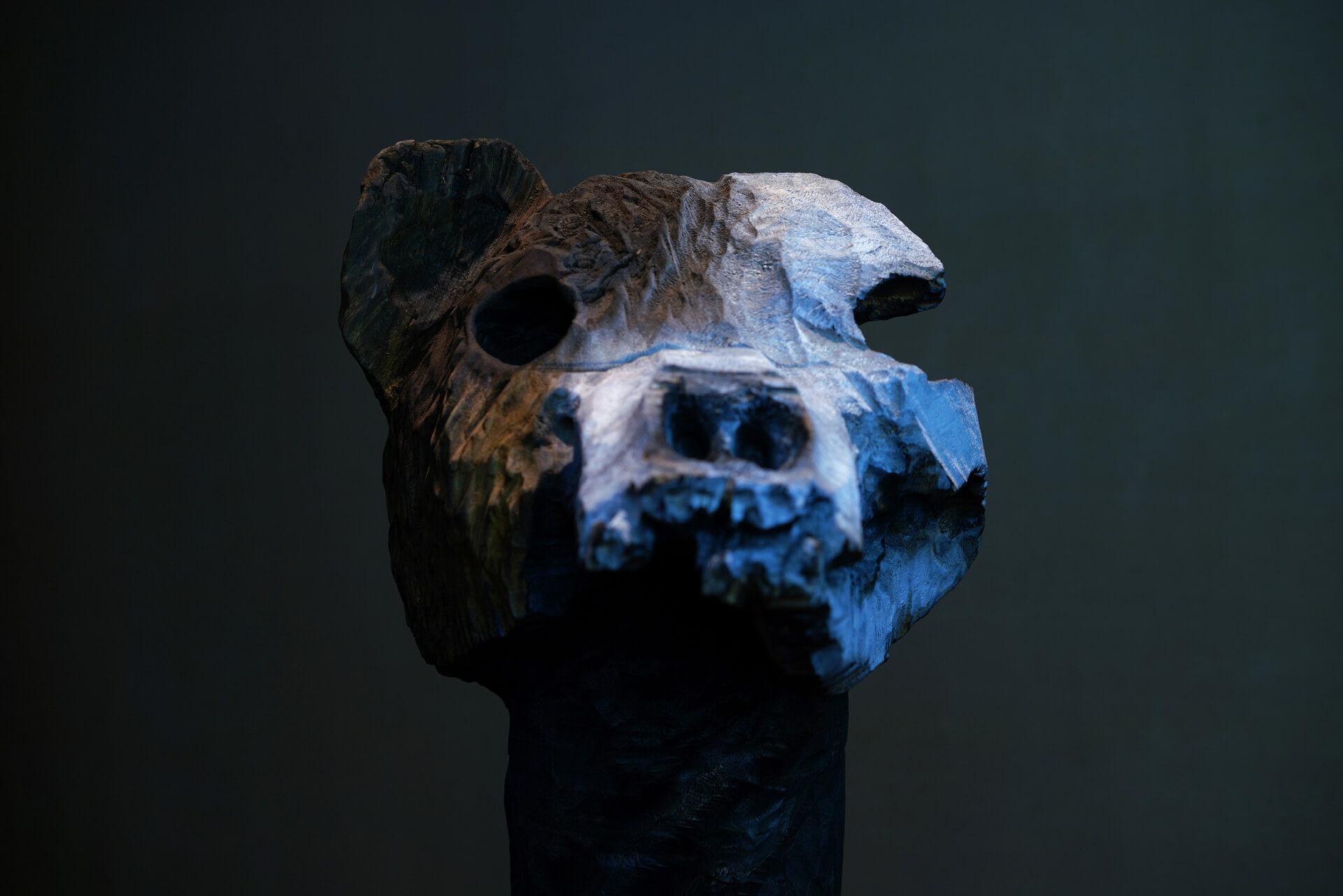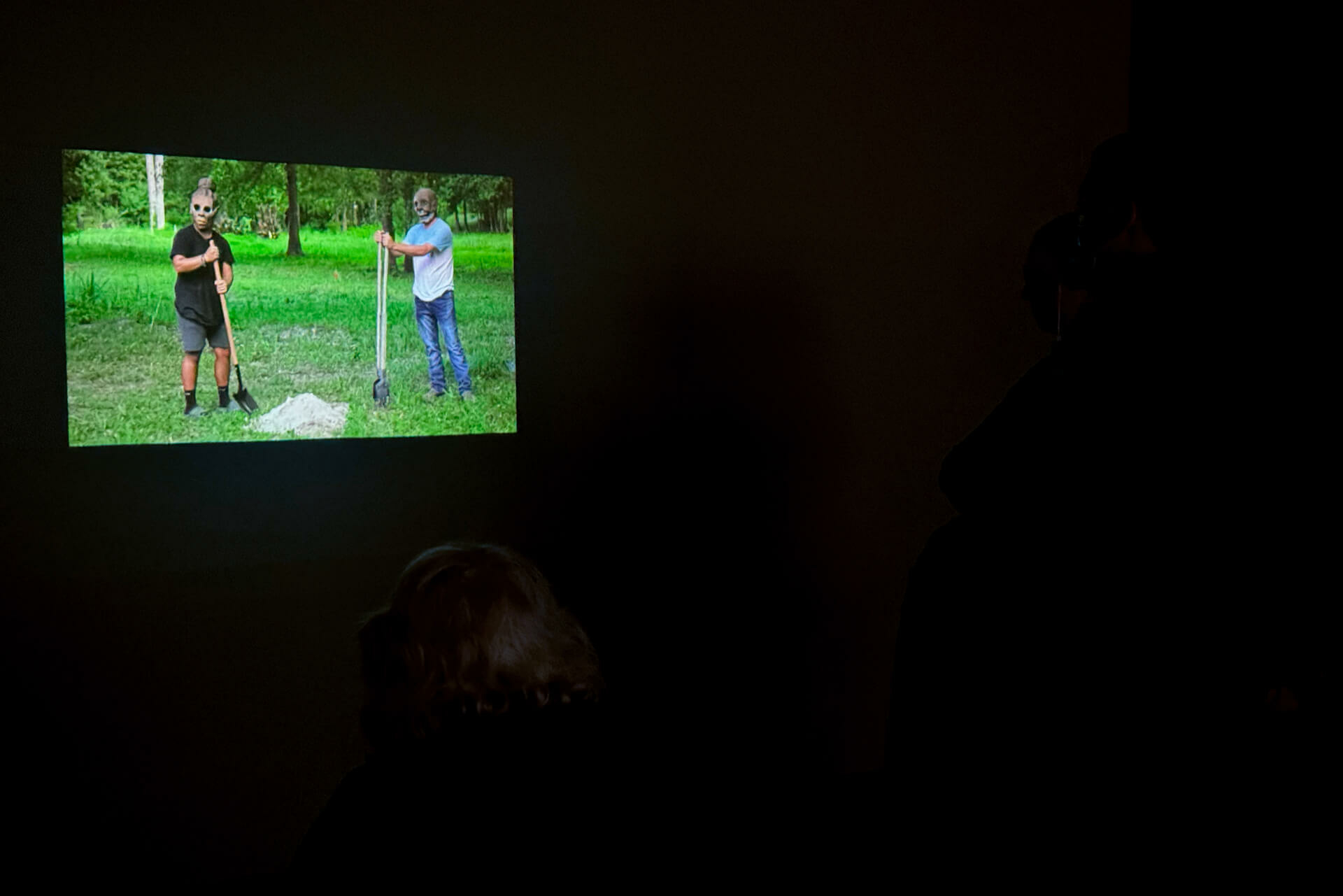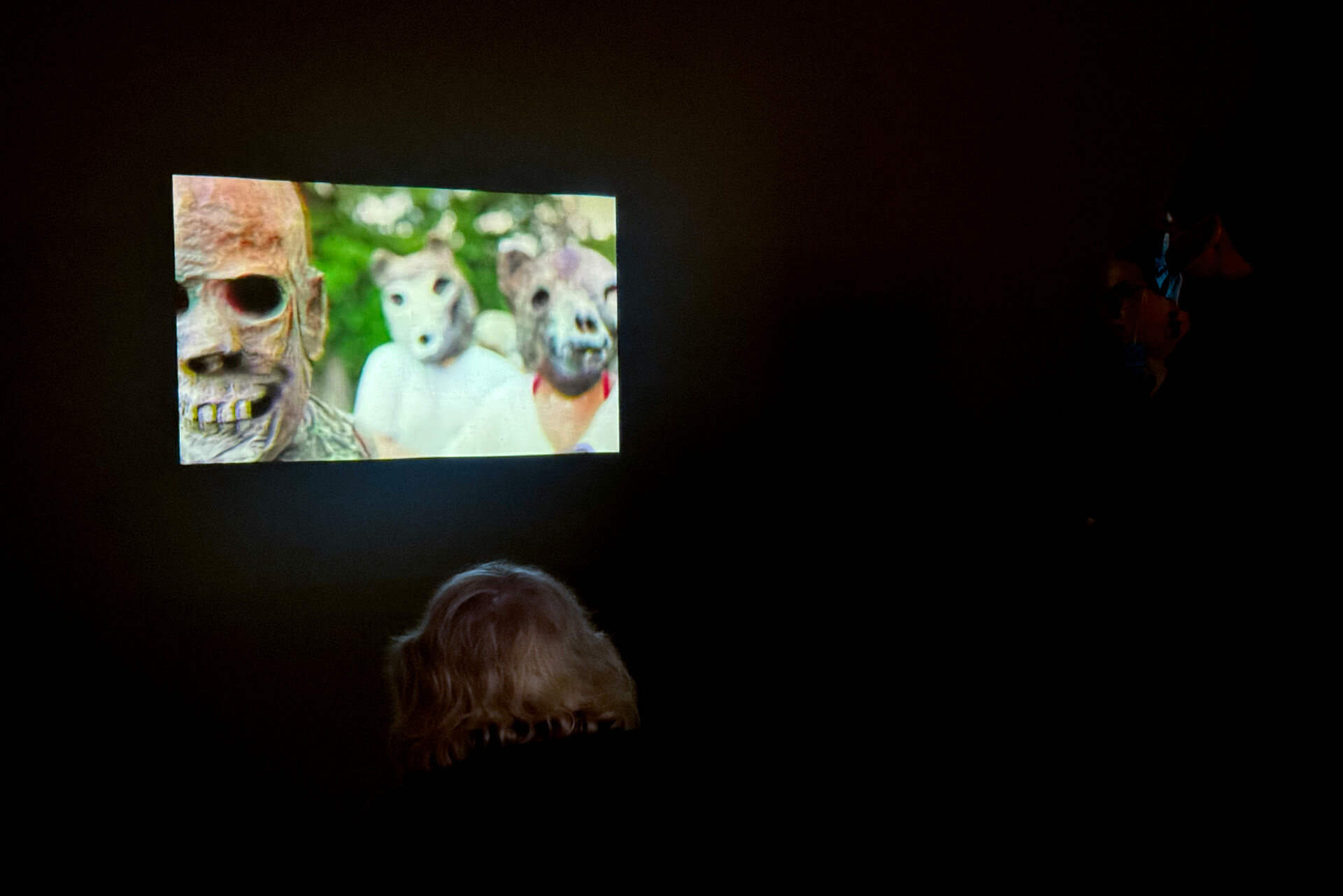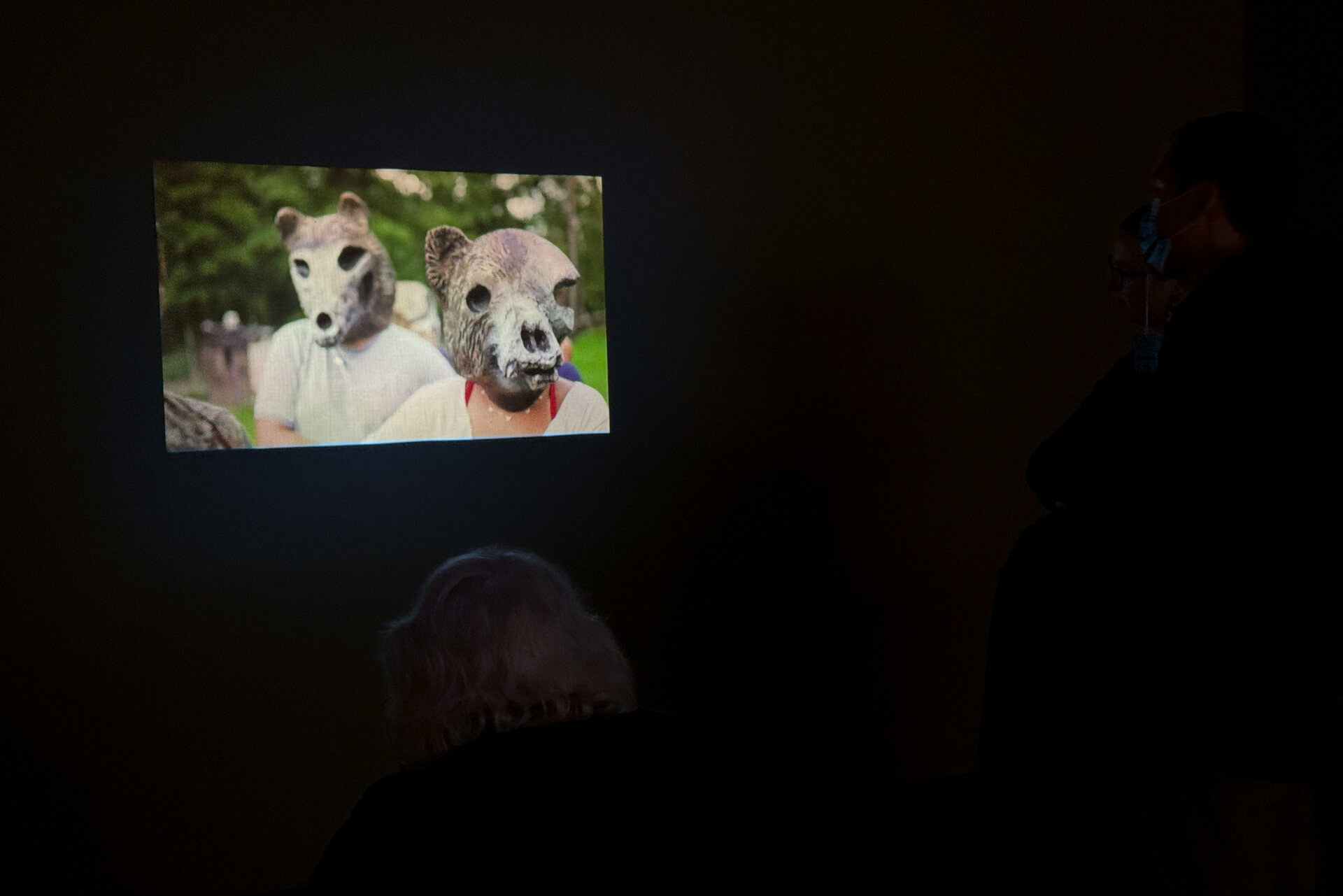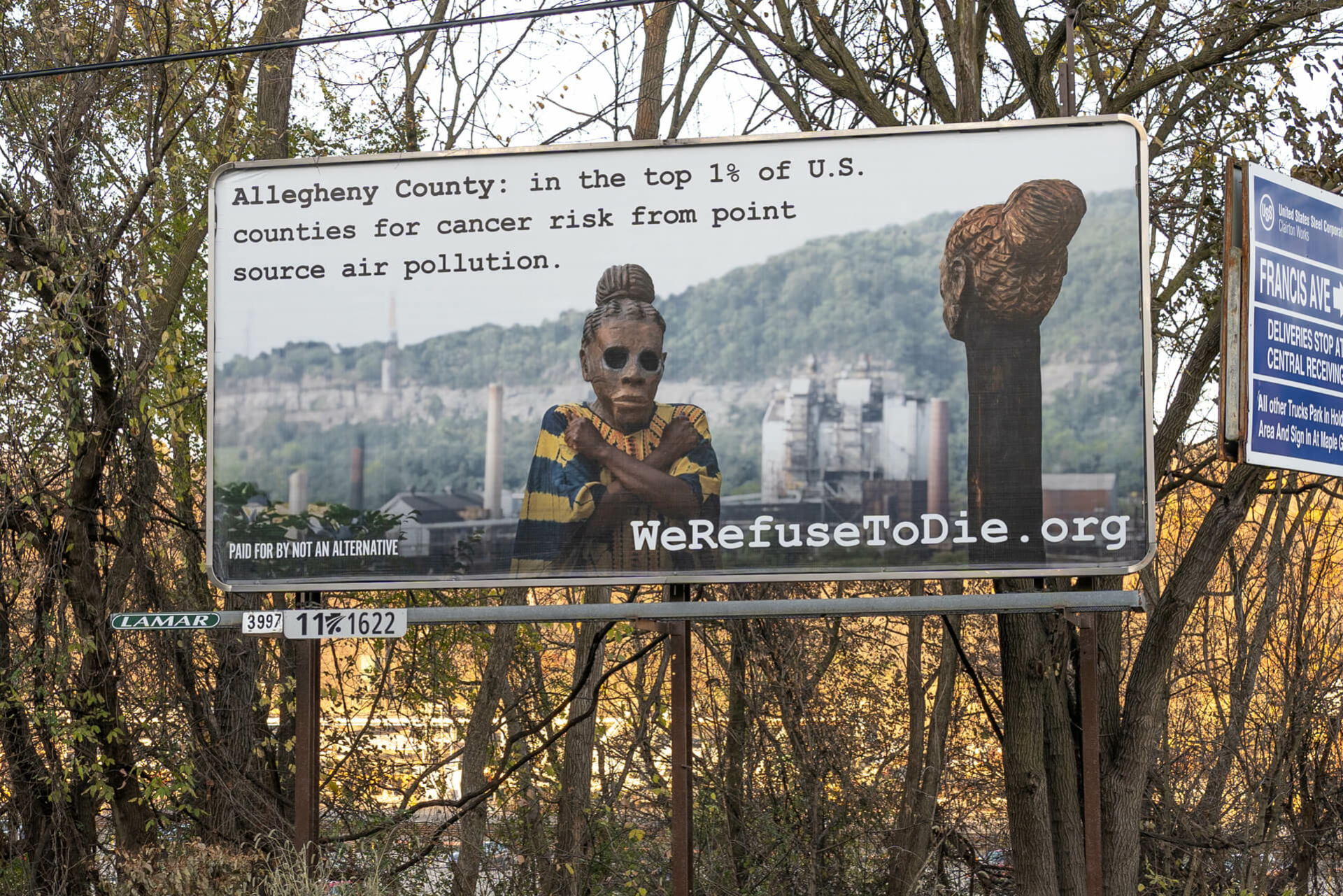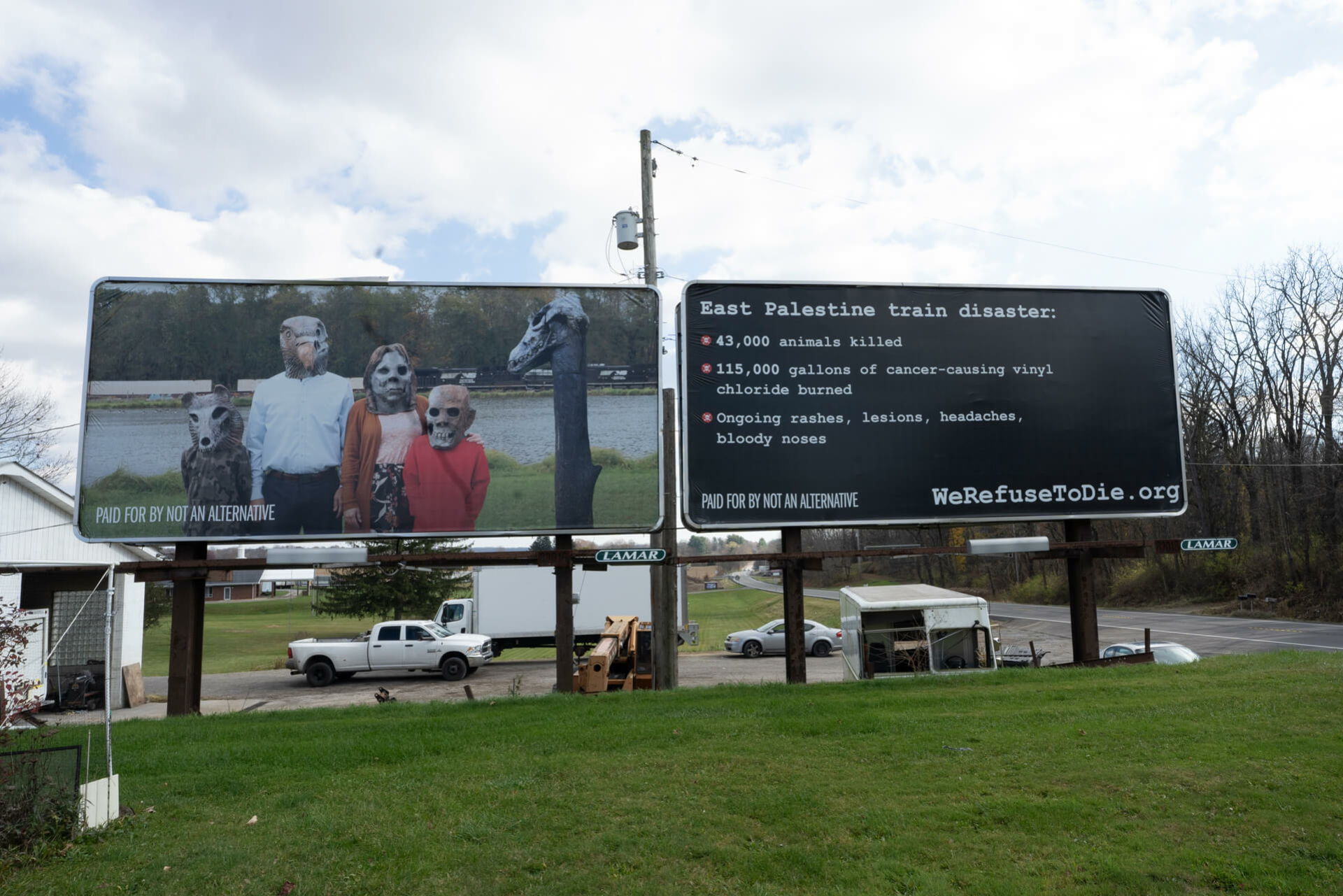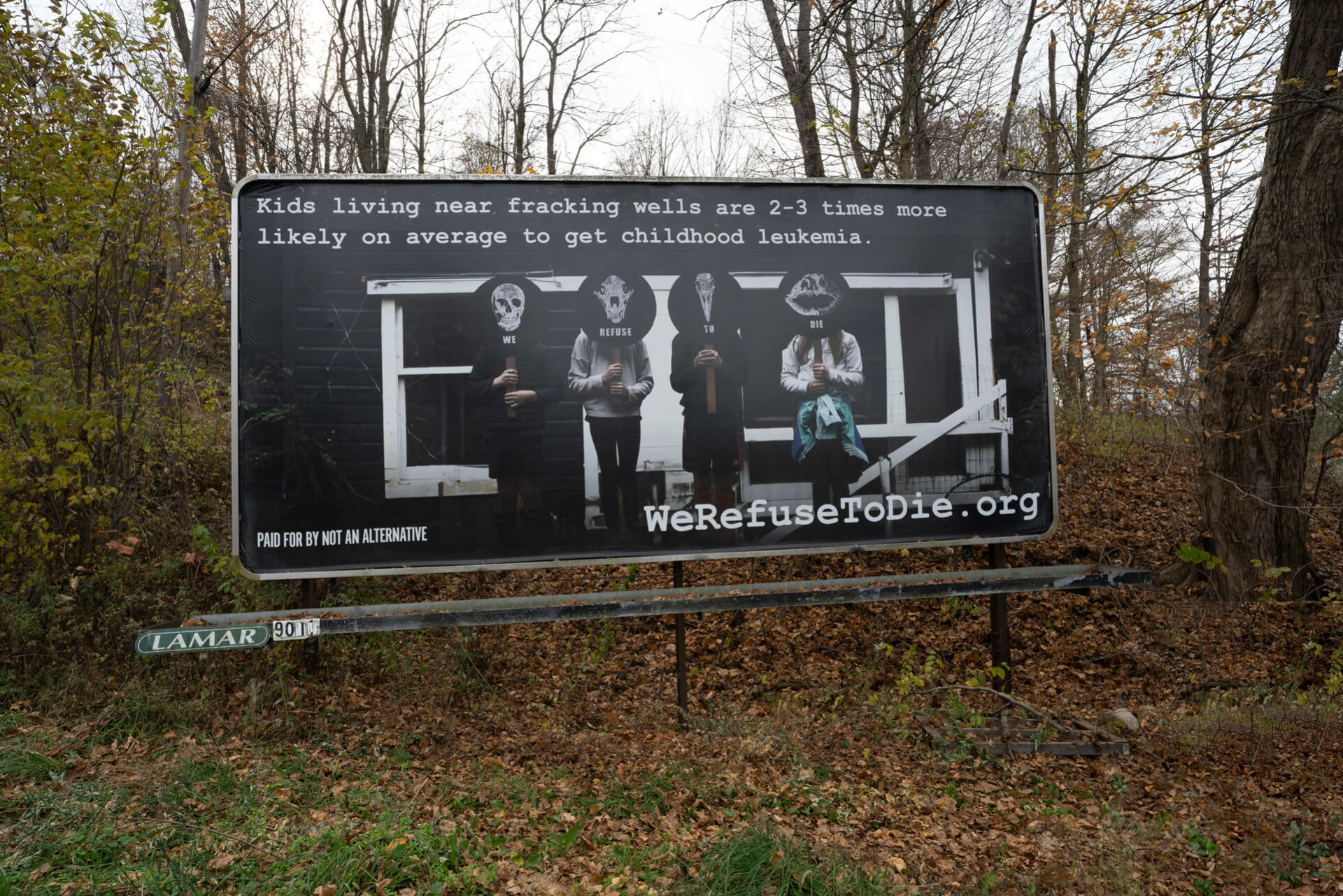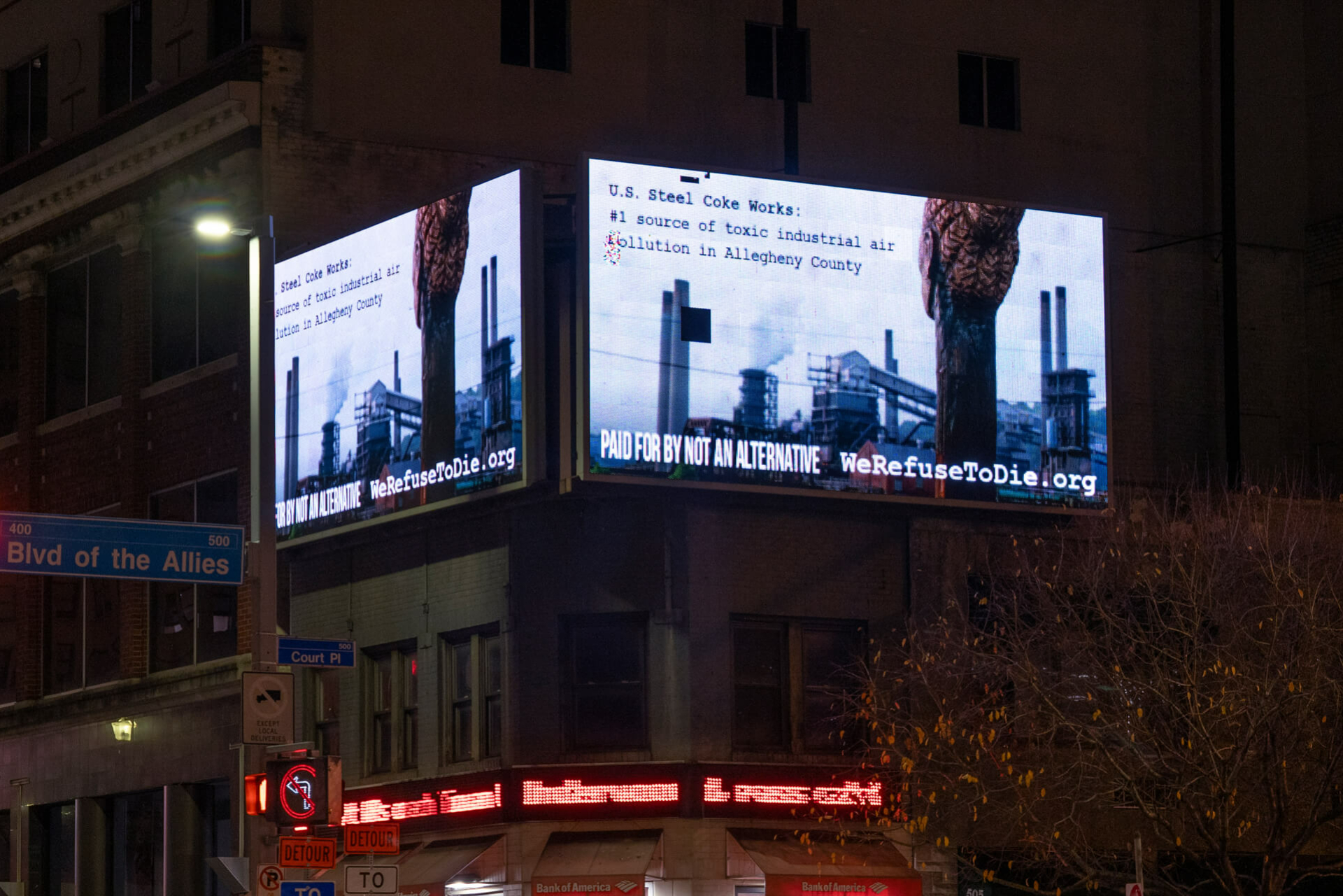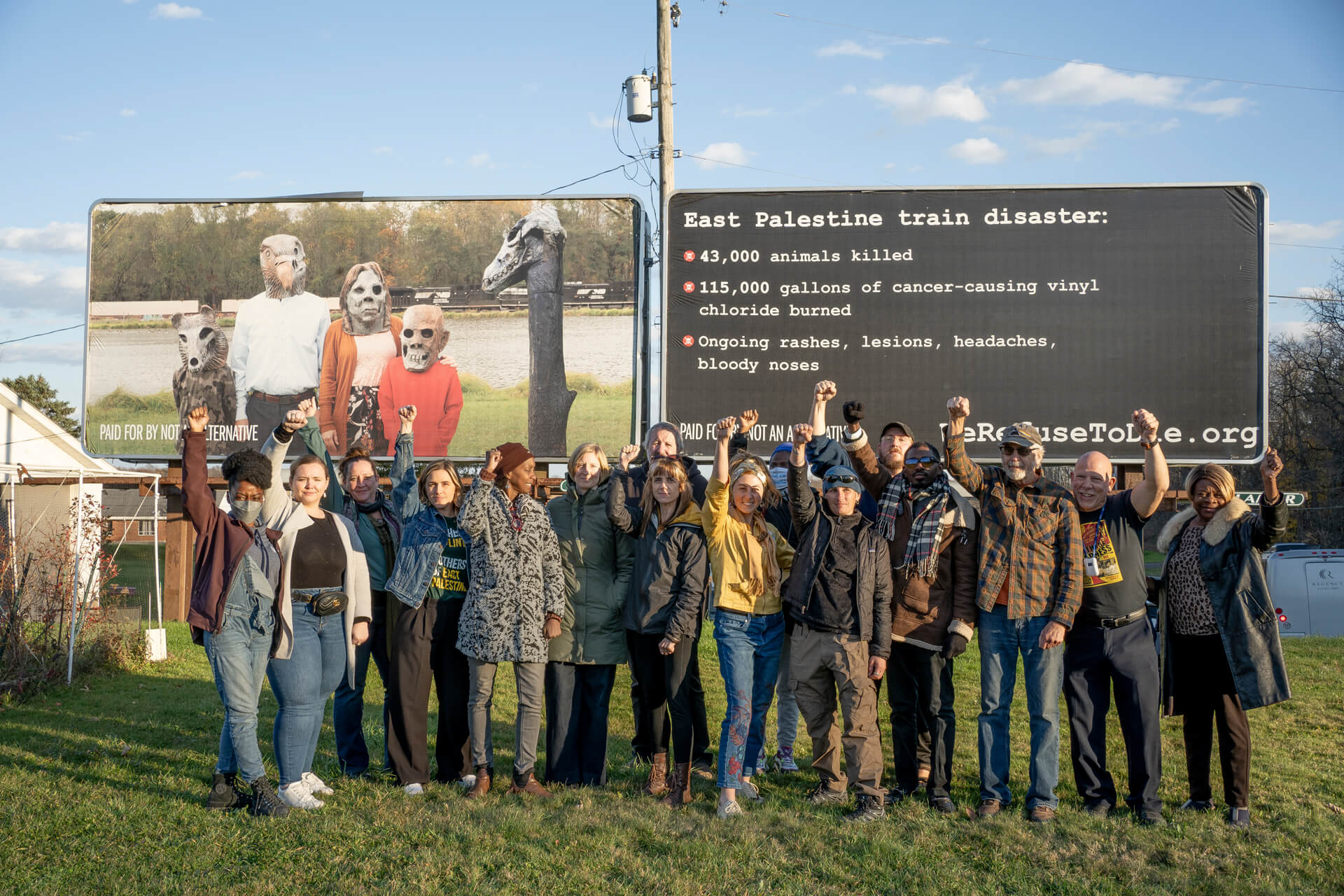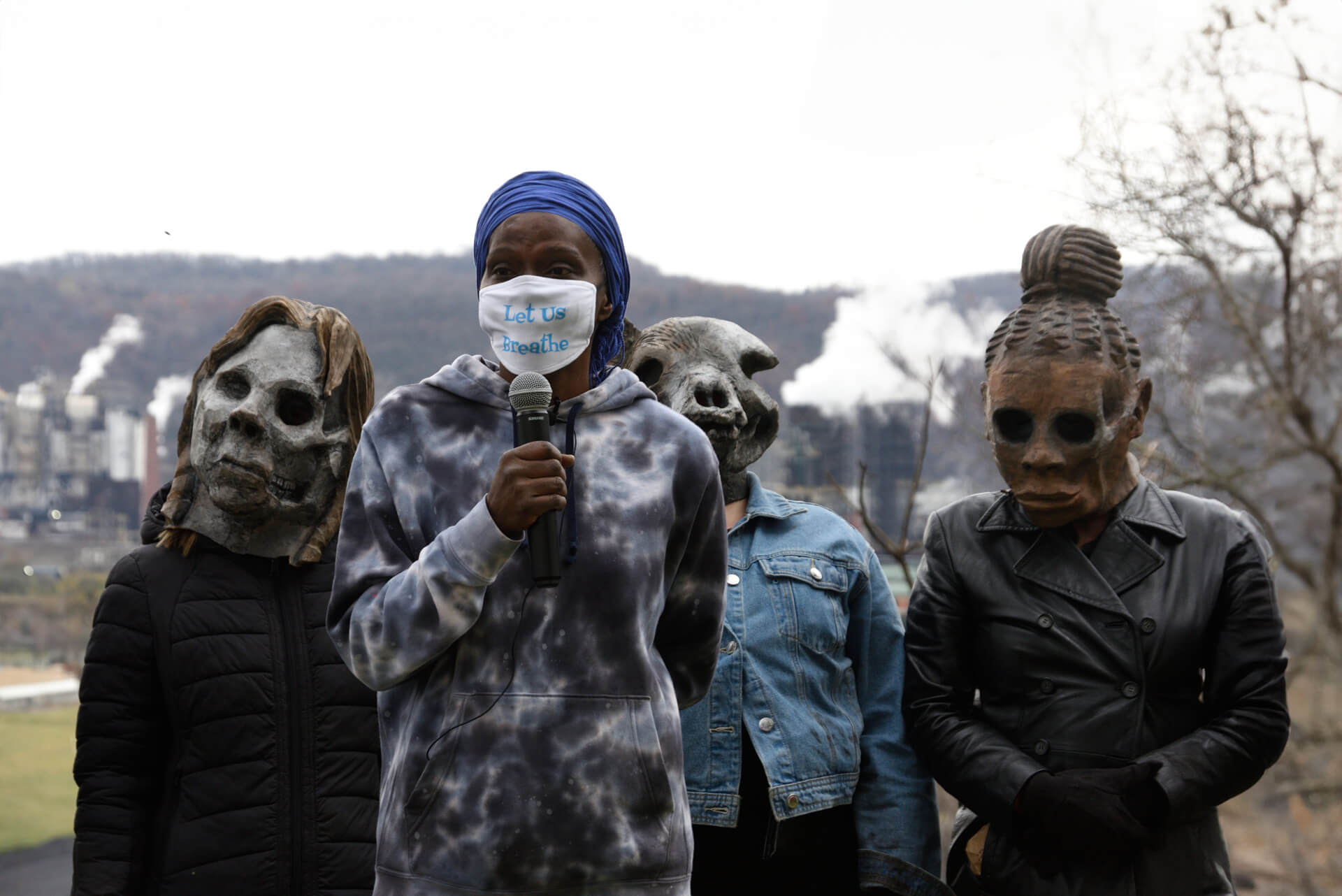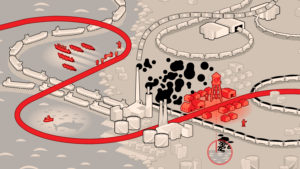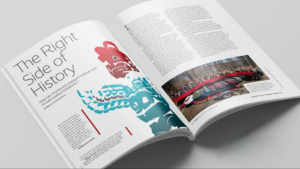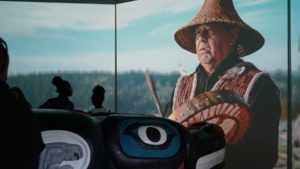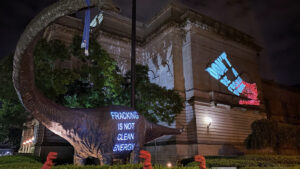Our children’s futures are being sacrificed on the altar of oil, gas, and petrochemical profits. But communities are rising up and fighting back.
Over the last year, we’ve been working with grassroots leaders across the country to launch We Refuse To Die — a new, national environmental justice art campaign connecting frontline fights to stop the ecological and public health harms of the fossil fuel industry.
From Appalachia to the Gulf South and beyond, Black, Latinx, Indigenous and poor white communities living near refineries, pipelines, fracking sites, and other polluting infrastructure experience disproportionate rates of asthma, rare cancers, and other terminal illness. In the western United States, wildfires cover communities in toxic smoke and ravage the more-than-human world, destroying homes and habitats. Forced to live in unlivable conditions, humans and nonhumans alike are cast as the “living dead”.
With We Refuse to Die, the living dead speak back.
Incorporating art produced for museum and outdoor exhibition, public ritual, gatherings within and across communities, and visuals for performances, public hearings, and protest, this multi-year, multi-city project pushes back against the dominant representation of so-called “sacrifice zones” as sites of powerlessness and victimization.
In coalition with communities on the frontlines of climate and environmental justice struggles, We Refuse To Die forges new solidarities—across generations, geographies, and even species, metabolizing grief into collective strength and community power.
The campaign recently debuted in the Pittsburgh region, in an exhibition at the Carnegie Museum of Art and at a cross-community gathering, featuring story and strategy-sharing, “toxic tours”, billboards, and the permanent installation of an Externality monument. Hand-carved from a tree killed in climate-fueled wildfires, it is one of dozens of these monuments being installed in ceremonies across the country, at sites of industrial harm.
The next monument goes up this weekend in East Palestine, Ohio, on the one-year anniversary of the toxic chemical train disaster— one of the worst in U.S. history. In a ceremony embracing the theme of the phoenix rising, the community will celebrate the strength they have found in forging family with others across the country who are leading the fight for our future.
Join us. Learn more below, and if you can, support this work at the intersection of art and environmental activism with a donation of any size.
Exhibiting The Externalities
At the heart of the project are The Externalities, a series of public monuments honoring the enduring spirit of the ancestors in our struggles for climate and environmental justice. Hand-carved from Pacific Northwest trees killed in climate-fueled wildfires, over the next few years they will be permanently installed at public ceremonies throughout the Gulf South, Permian Basin, and Appalachia, facing the petrochemical plants and fossil fuel facilities that cause local and global harm.
The carvings were recently featured in a 6-month long exhibition at the Carnegie Museum of Art, along with large-scale video projections of the Externalities“watching” industrial fencelines in Texas, Louisiana, and Appalachia.
> Read more about the exhibit here.
Billboards in the News
Fossil fuel and petrochemical corporations are poisoning our communities, contaminating the air we breathe and the water we drink, and threatening our children’s future with catastrophic climate change.
A new billboard campaign put them on notice.
It kicked off in November in the Pittsburgh region, where big polluters convened for the MetCoke World Summit, sponsored by coal, steel and coking companies. Billboards were installed near regional sites of toxic pollution, and in Pittsburgh outside the summit hotel.
The campaign made the evening news, provoking a response from summit sponsor US Steel, which operates the Clairton CokeWorks Plant––one of the worst sources of cancer-causing industrial air pollution in the nation.
> Check out the TV news segment and take action:
Forging Family
In November, 25 frontline community leaders from Texas, Louisiana, Mississippi, West Virginia, Pennsylvania, Ohio, and Sarnia, Ontario joined us in Pittsburgh for a week-long convening of story and strategy-sharing, bread-breaking, and “toxic tours” led by residents of so-called “sacrifice zones” across the Ohio River Valley.
Check out this NPR story about We Refuse To Die and the “toxic tours.”
The convening culminated in the first permanent installation of an Externality monument, overlooking the US Steel CokeWorks Plant in Clairton, PA, where a predominantly low-income Black community breathes the most toxic air in the county.
The ceremony featured libation and prayer, song, West African drumming and dancing, and the procession and planting of the carving by Clairton and Gulf South community members. Grandmother Melanie Meade of Black Appalachian Coalition is host to the monument, which she says, honors her ancestors who struggled before her and gives her strength each day.
Watch the video from this very moving and powerful ceremony.

